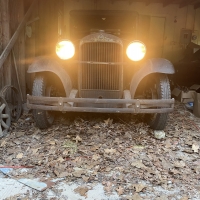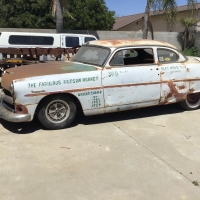Routine 70 year maintenance, 1929 Essex
Comments
-
Okay this has nothing to do with “know how” other than how to spend money!Many thanks to Geoff for the fine reproduction!
It’s definitely too shiny up close but when you back off it’s not so overwhelming! Once I clean and polish the car I think it will blend in nicely.I’m definitely not turning my back on it without replacing it with the original!This motivates me to get the cooling system cleaned out. My progress has been derailed by the Vulture “couple” that uses my barn for hatching chicks. I’m afraid I’m going to have to complete the walls to keep them out.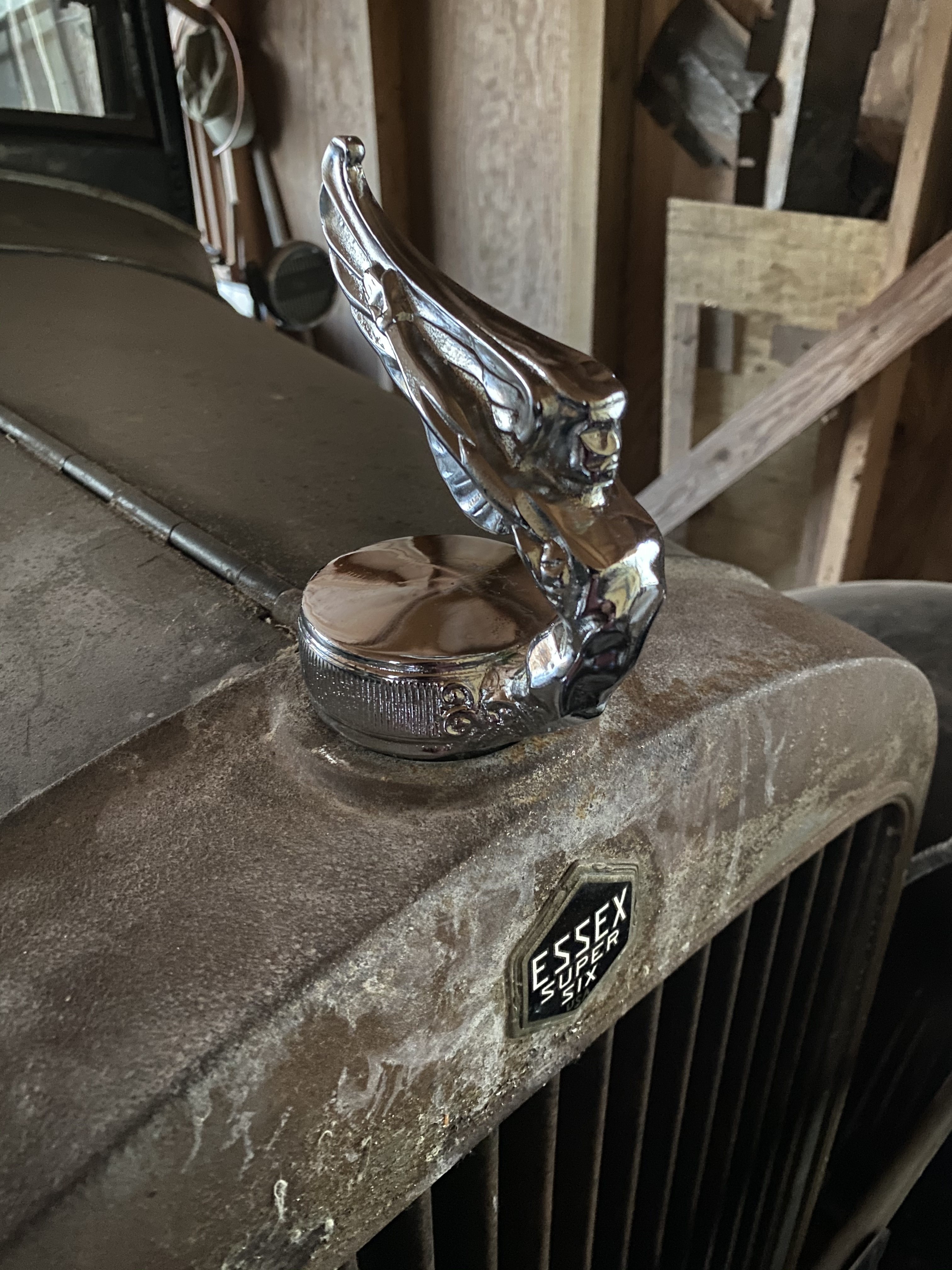
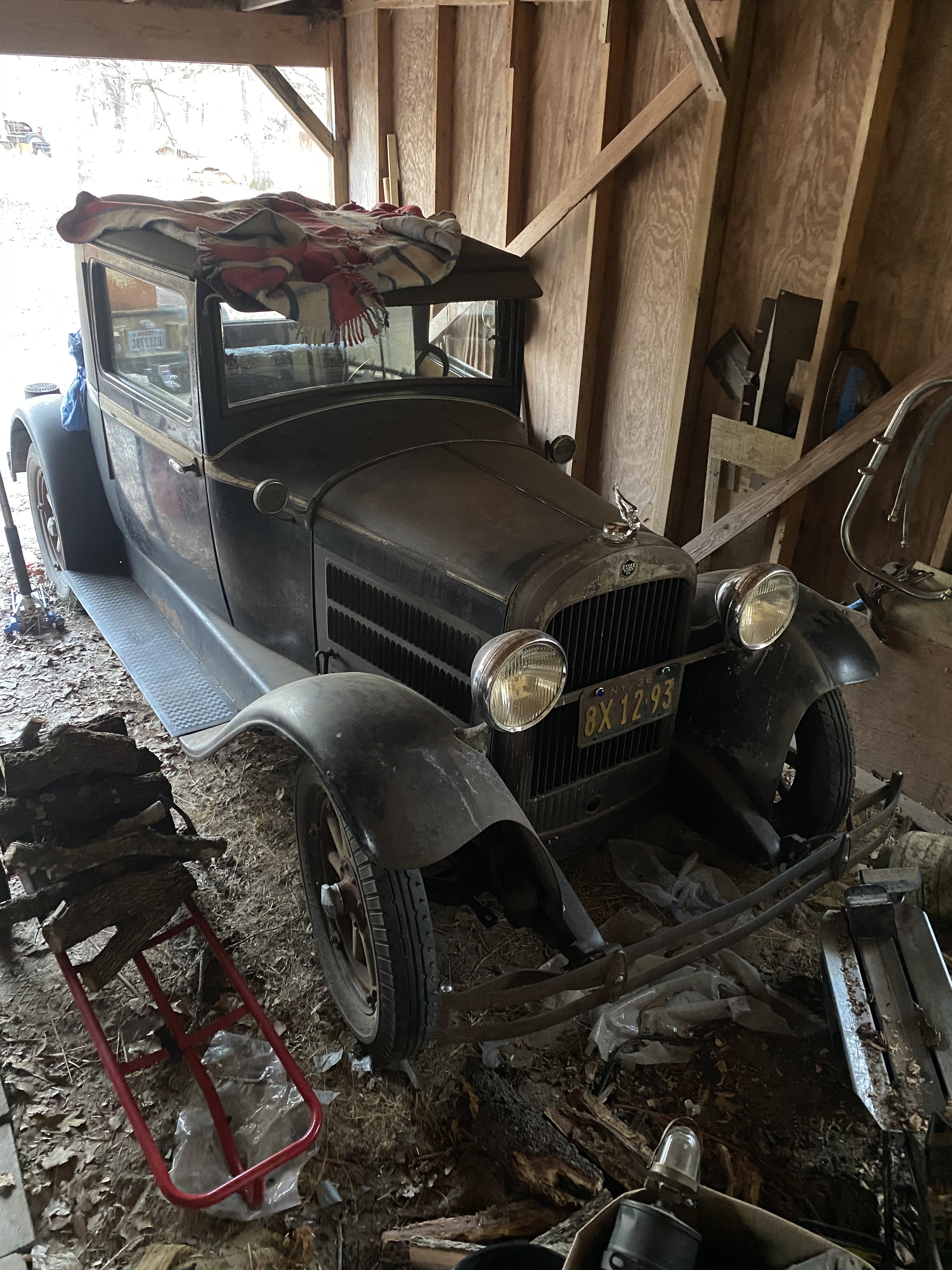
 0
0 -
Love it!!!0
-
I second that0
-
Kevin, it sure looks good
0 -
Thanks guys!0
-
Yesterday the steering wheel hub arrived Saturday in gleaming nickel plate!Thanks to all of your help she’s no longer a menace to society and is no longer a danger to itself and others! The levers are installed in their correct locations and the circlips that came with it were a struggle so I made my own out of 1/16” stainless TIG rod. I’m so pleased that it’s one step closer to passing the state inspection for Texas citizenship!
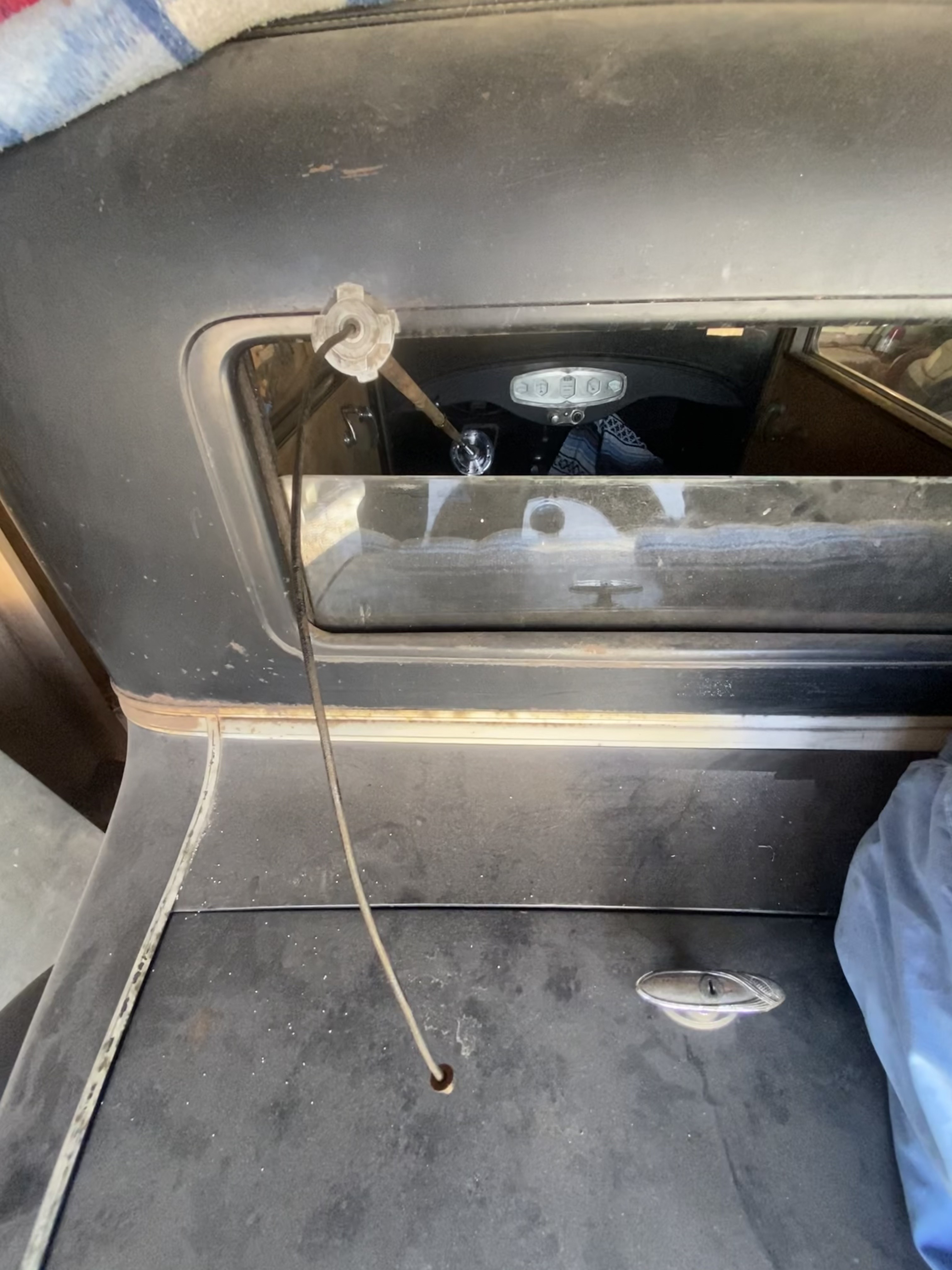
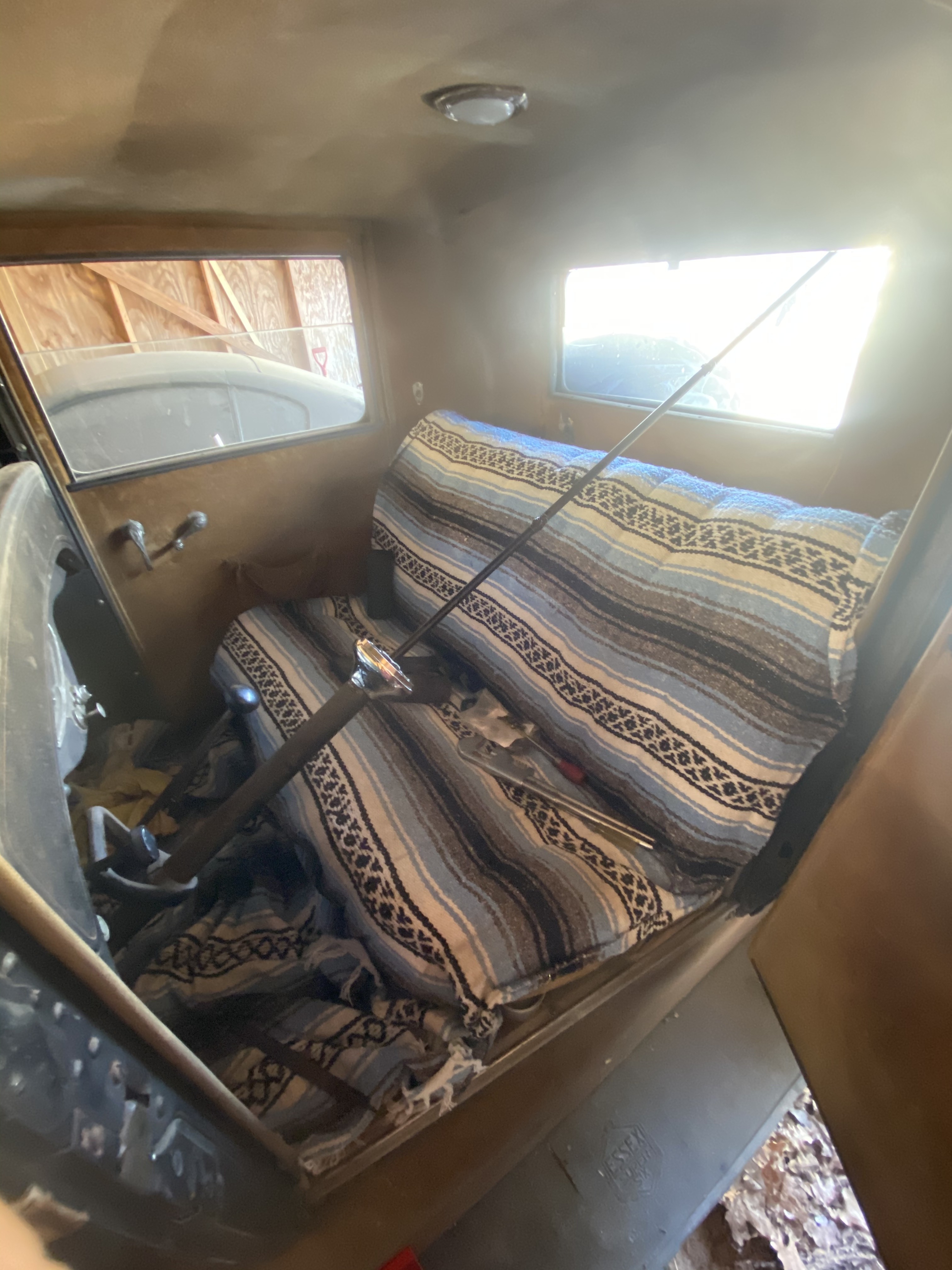
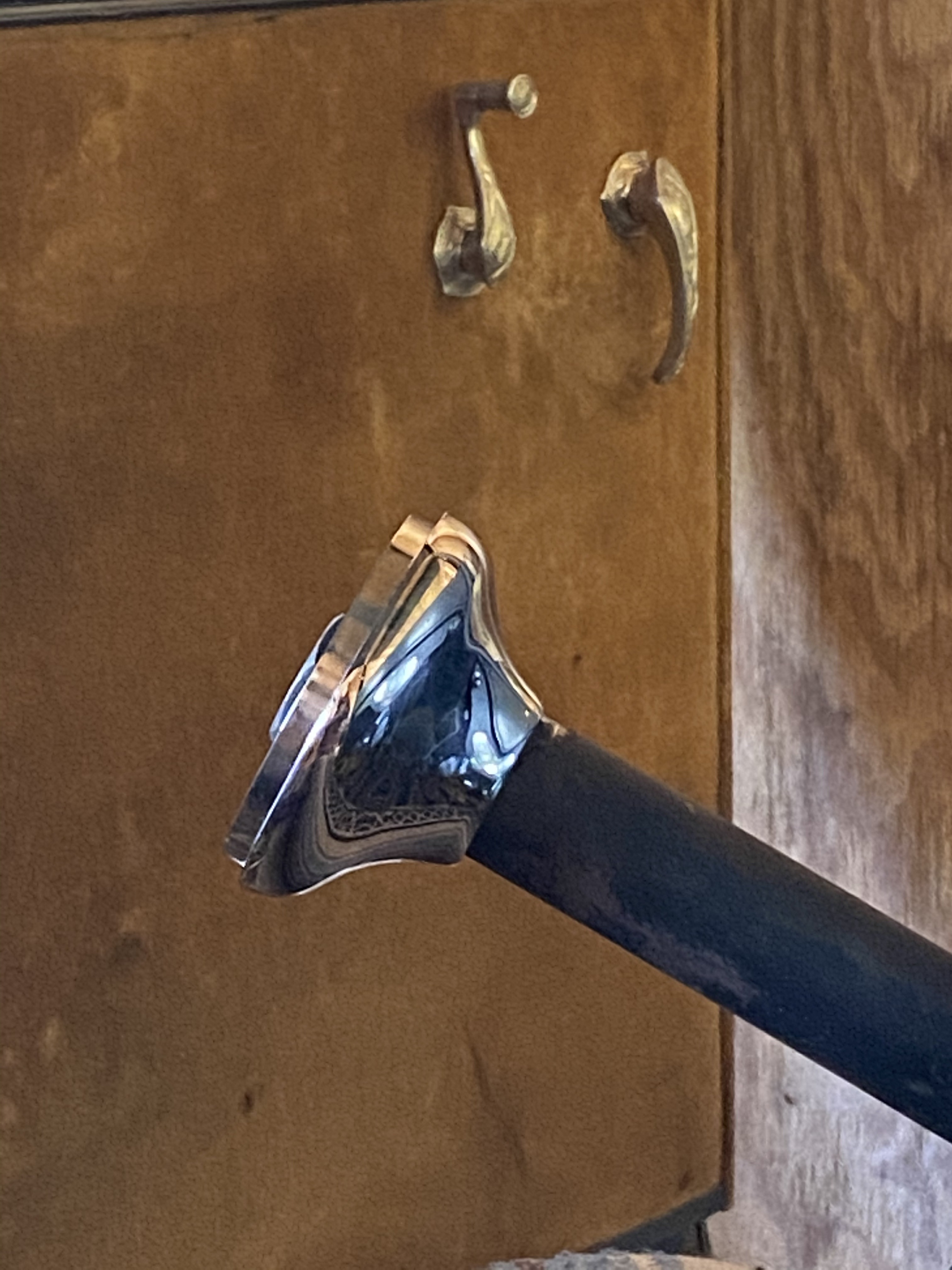 0
0 -
Very nice0
-
Thanks for making it possible Tom!0
-
Hi, Lots of questions about my parts that I didn't even know were missing. In a photo in your Sept 2020 post, there is a vertical array of door parts, and you say the top one is a friction band for the throttle. I haven't seen that. Do I need that piece? Where does that go, and why is it there?
/Tom (Always missing something I don't know about.)0 -
The pocket knife indicates the friction band. Still in it’s previously bent, condition.Directly below the blade is the throttle lever stop washer. ....I believe it’s called. I am uncertain I have it installed correctly but it’s in there and it limits the range of motion so I believe I guessed correctly.
 Friction band, released from it’s cocoon of coagulated grease, but yet to be straightened.Without it, the throttle lever, the carburetor return spring would snap back to the closed position like the “foot feed” does.
Friction band, released from it’s cocoon of coagulated grease, but yet to be straightened.Without it, the throttle lever, the carburetor return spring would snap back to the closed position like the “foot feed” does.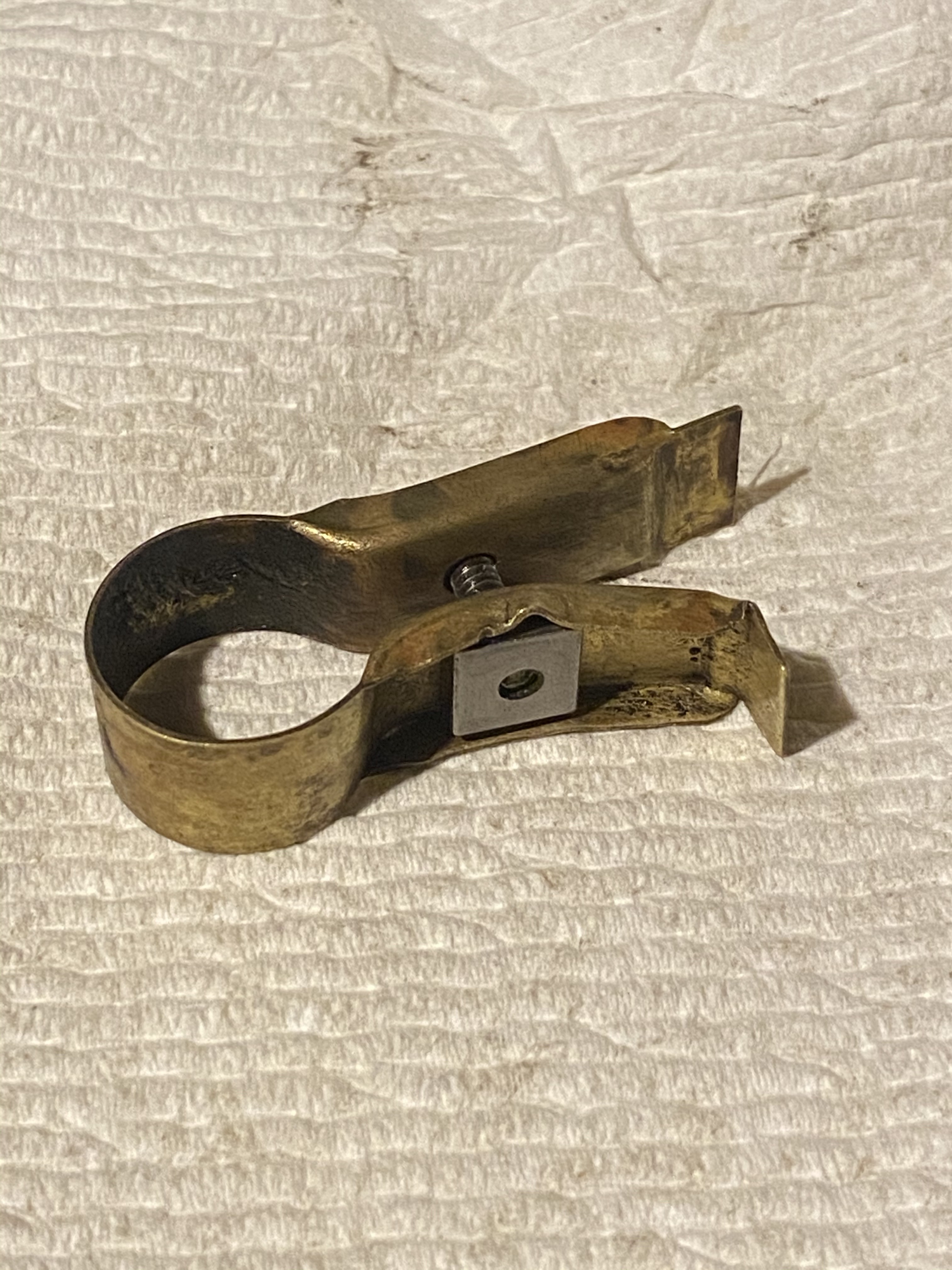 Here it is, in it’s natural habitat without the stop washer in place.Do you have the levers and horn button? They are like hens teeth.
Here it is, in it’s natural habitat without the stop washer in place.Do you have the levers and horn button? They are like hens teeth.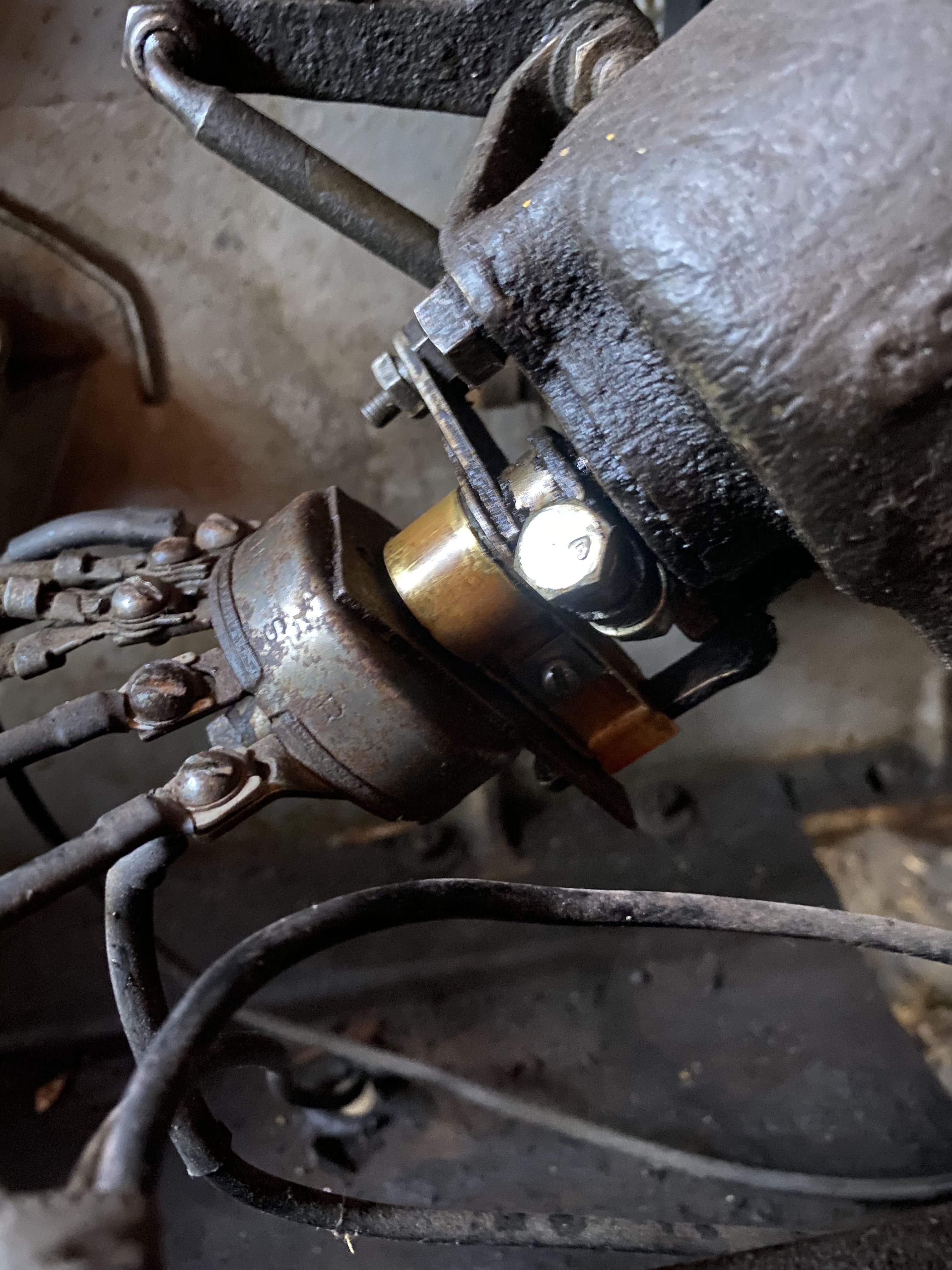 0
0 -
Friction plate diagram...
My car came with the lower throttle arm in place and the bits in boxes. I had many of the parts I needed and wasn’t sharp enough to notice without being spoon fed information from various gentlemen in the club. That is in spite of the fact that Mr. King Meticulously packaged and labeled everything for the adoption!In my defense, the little coupe gained several GM parts in it’s collection of loose bits through the years which added to the confusion a little.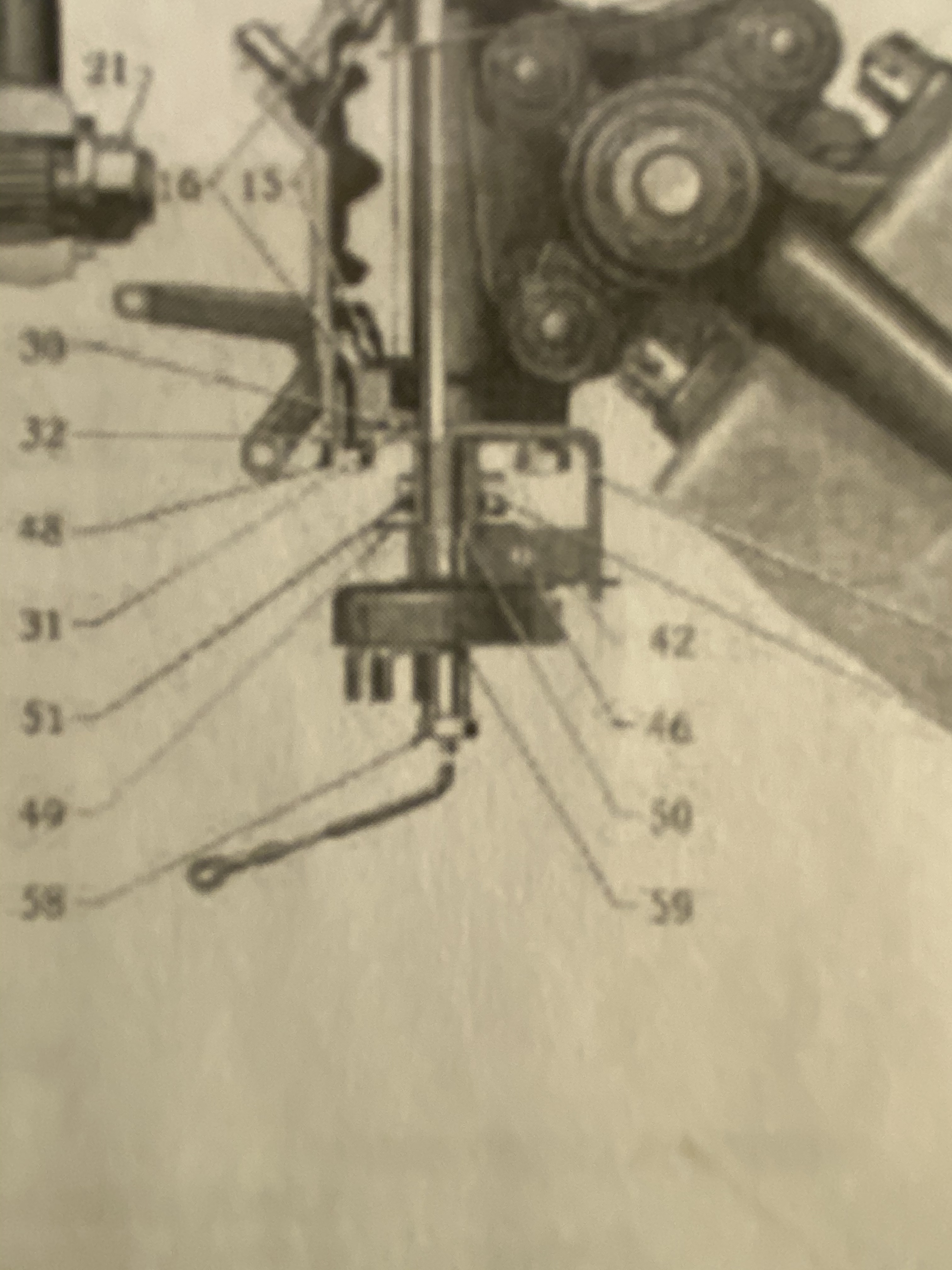 Cut two, mirror image. The “oval” is supposed to be a 2-1/8” circle if I am not mistaken.With a leather needle, any old cast iron sewing machine will handle the light leather. The originals were made of roof material. I used the circa 1911 Davis Vertical Feed treadle in a nice compact parlor cabinet.
Cut two, mirror image. The “oval” is supposed to be a 2-1/8” circle if I am not mistaken.With a leather needle, any old cast iron sewing machine will handle the light leather. The originals were made of roof material. I used the circa 1911 Davis Vertical Feed treadle in a nice compact parlor cabinet.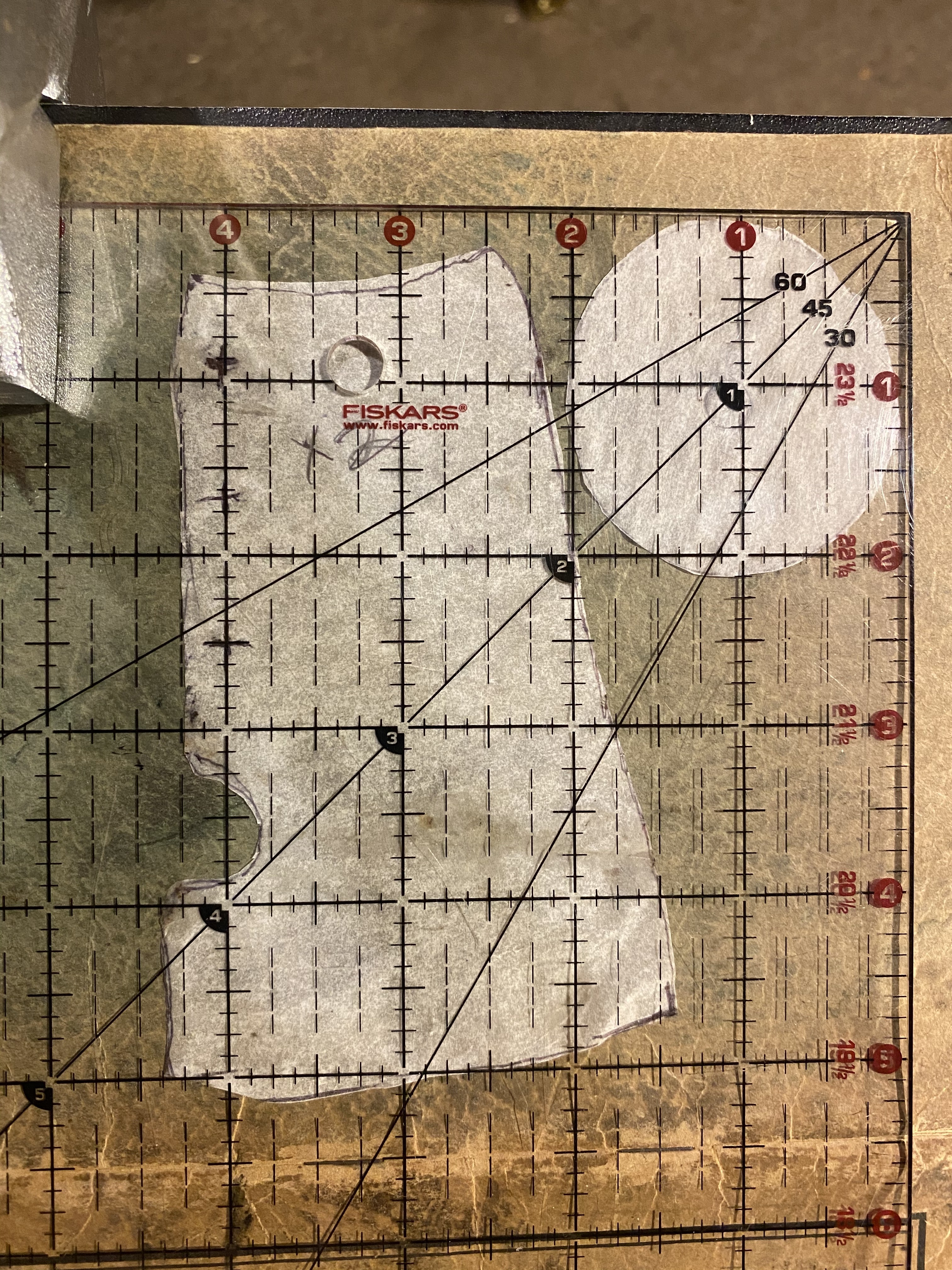
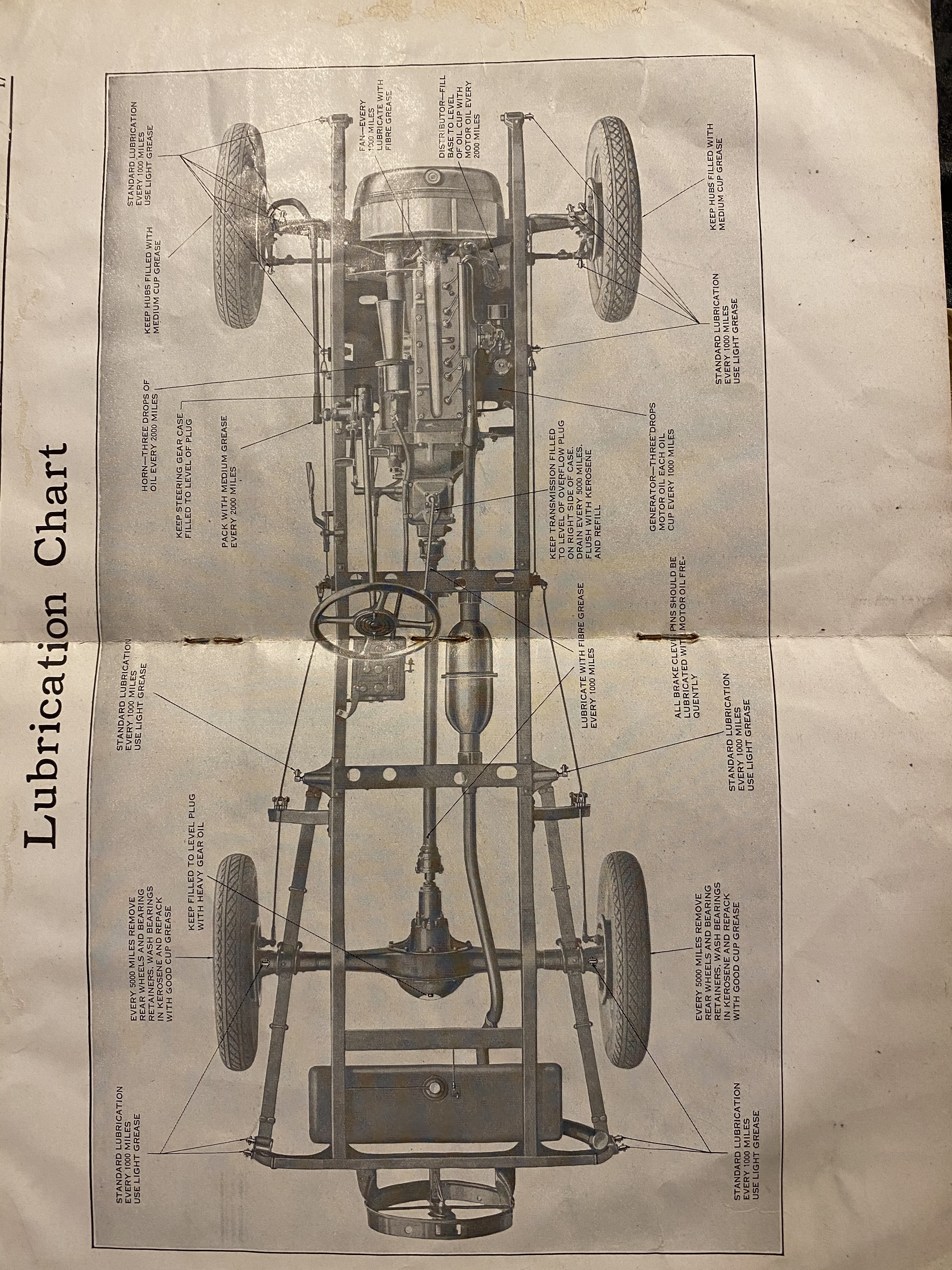 My car has a few more zirks than this diagram shows but you get the idea.Happy to provide any reference photos and what (little) I have learned so far!0
My car has a few more zirks than this diagram shows but you get the idea.Happy to provide any reference photos and what (little) I have learned so far!0 -
That is an Essex layout, not a Hudson, which is different for the throttle and advance/retard friction bands.0
-
Thank you kindly for your wisdom Geoff! Sometimes the most obvious things just completely elude me!Geoff said:That is an Essex layout, not a Hudson, which is different for the throttle and advance/retard friction bands.
0 -
1)Passenger side trim, notch at dash.
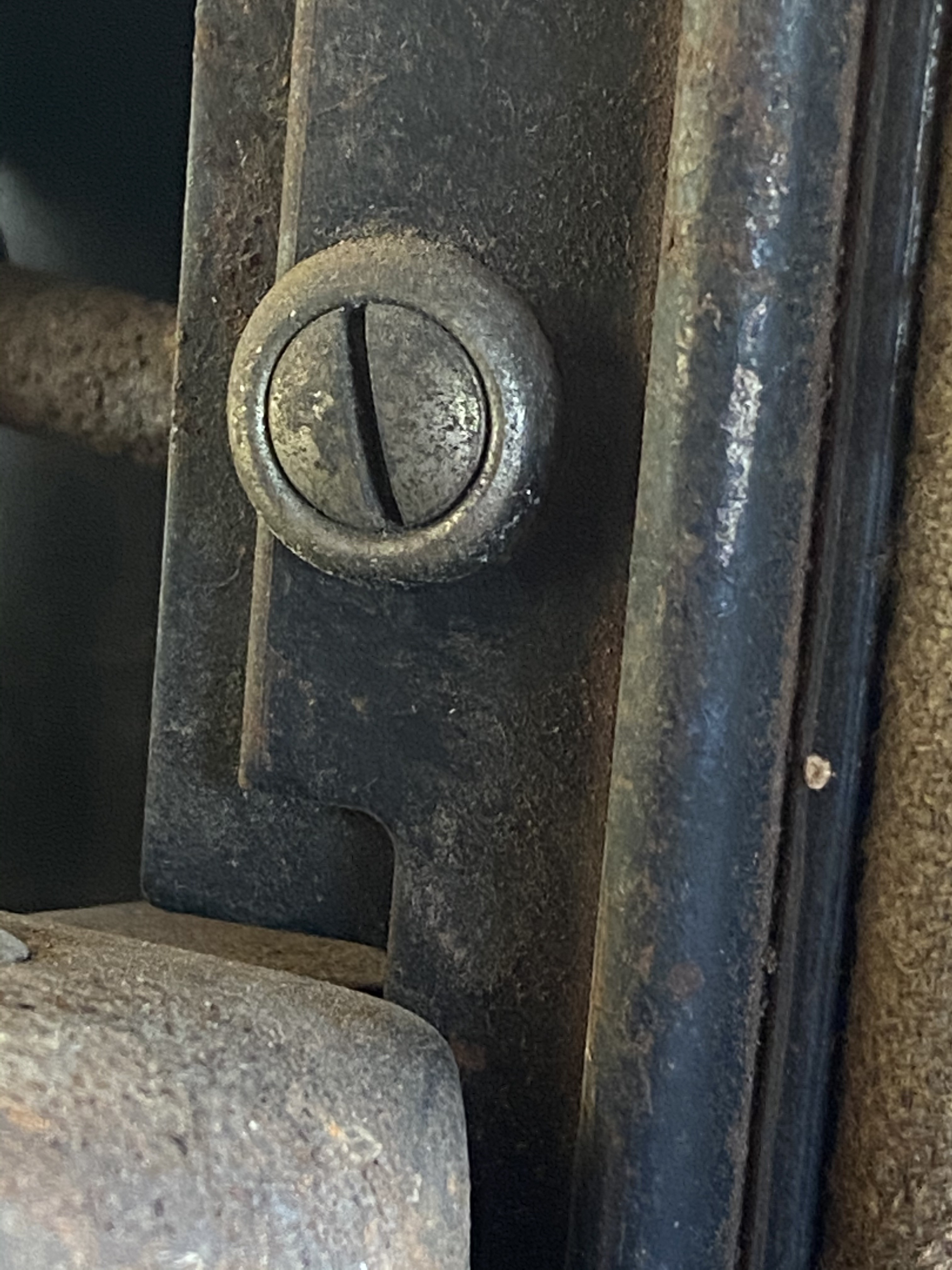 2) another view showing bottom edge of the notch.
2) another view showing bottom edge of the notch.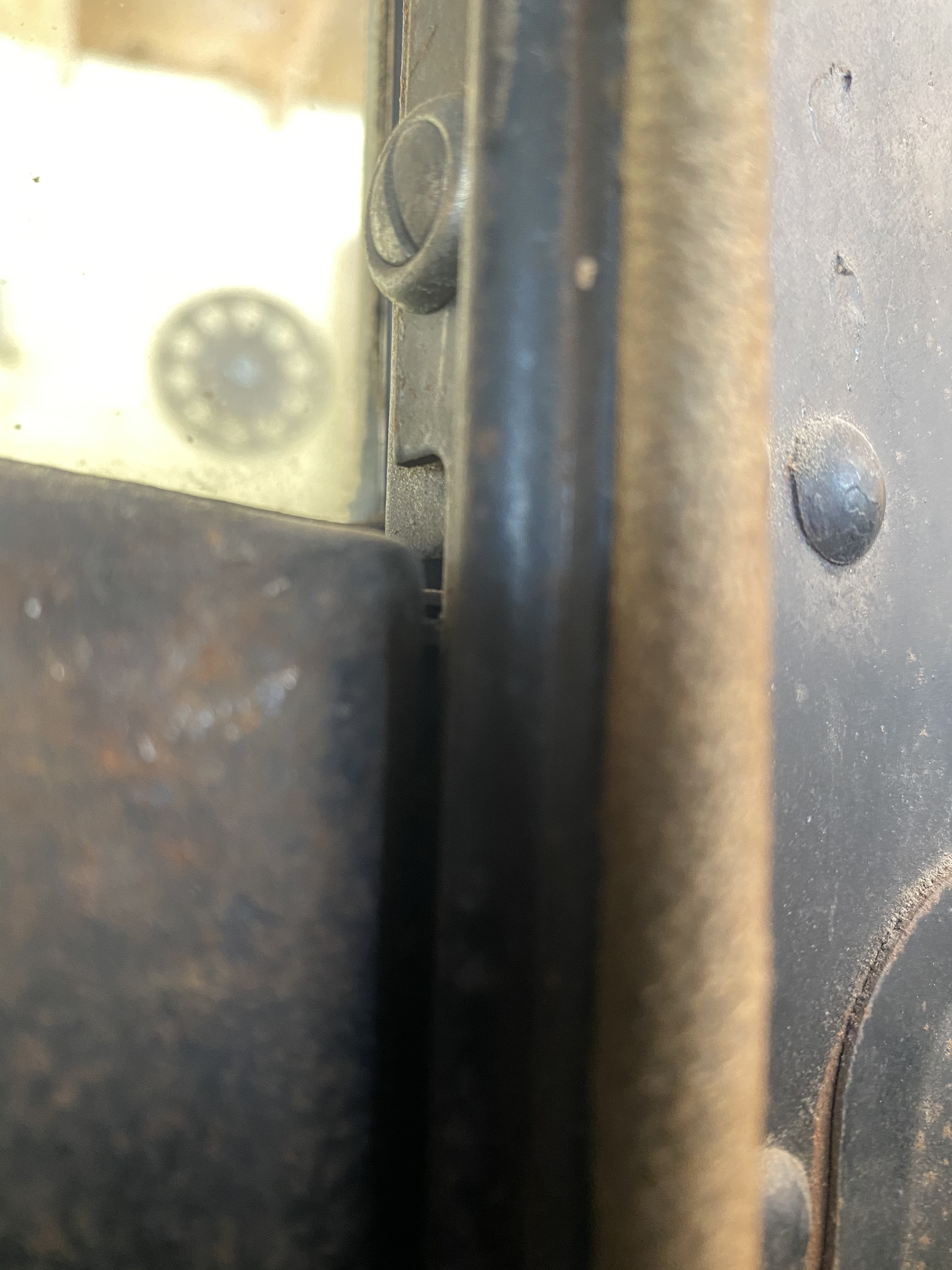 3) passenger side
3) passenger side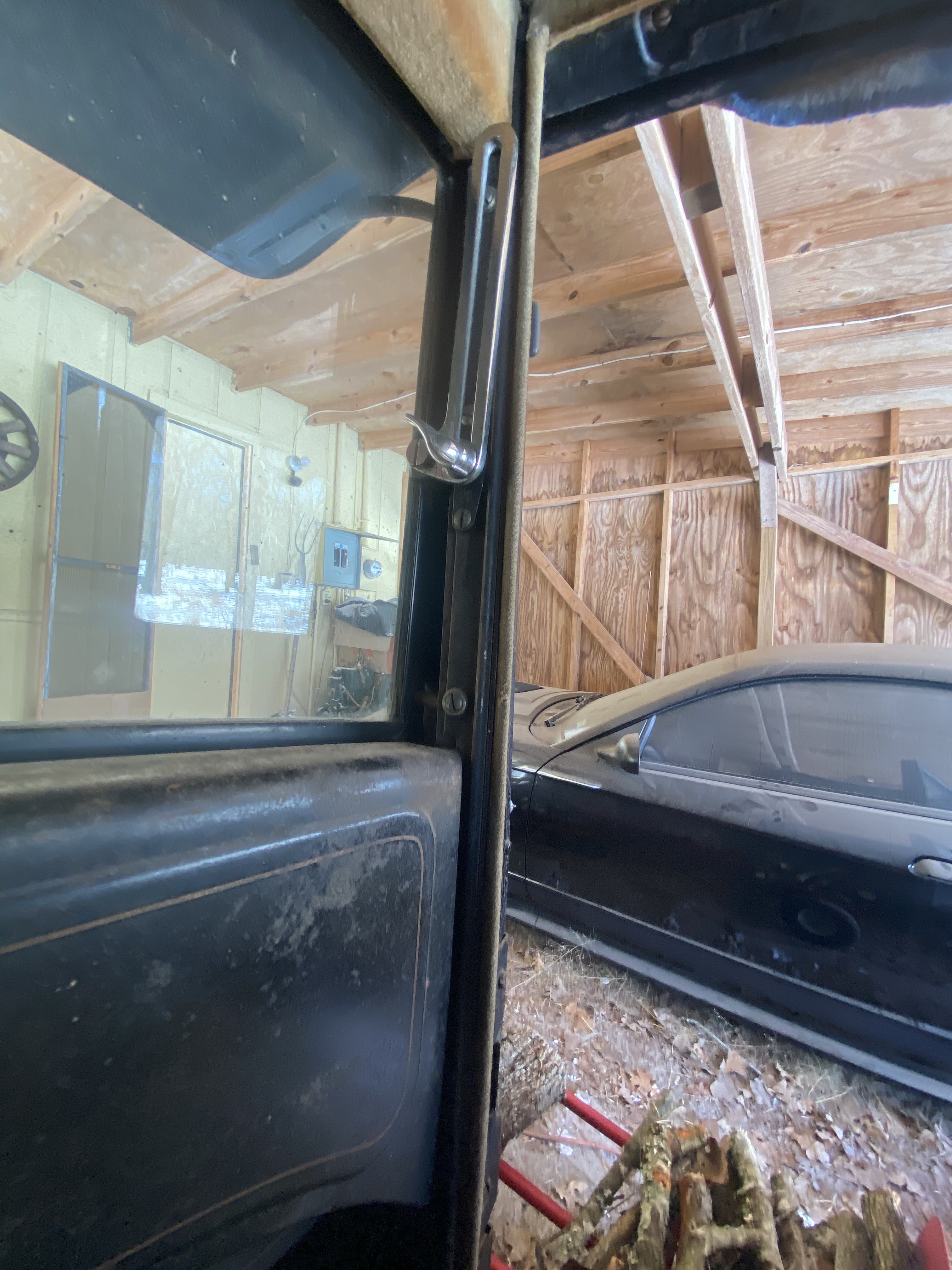
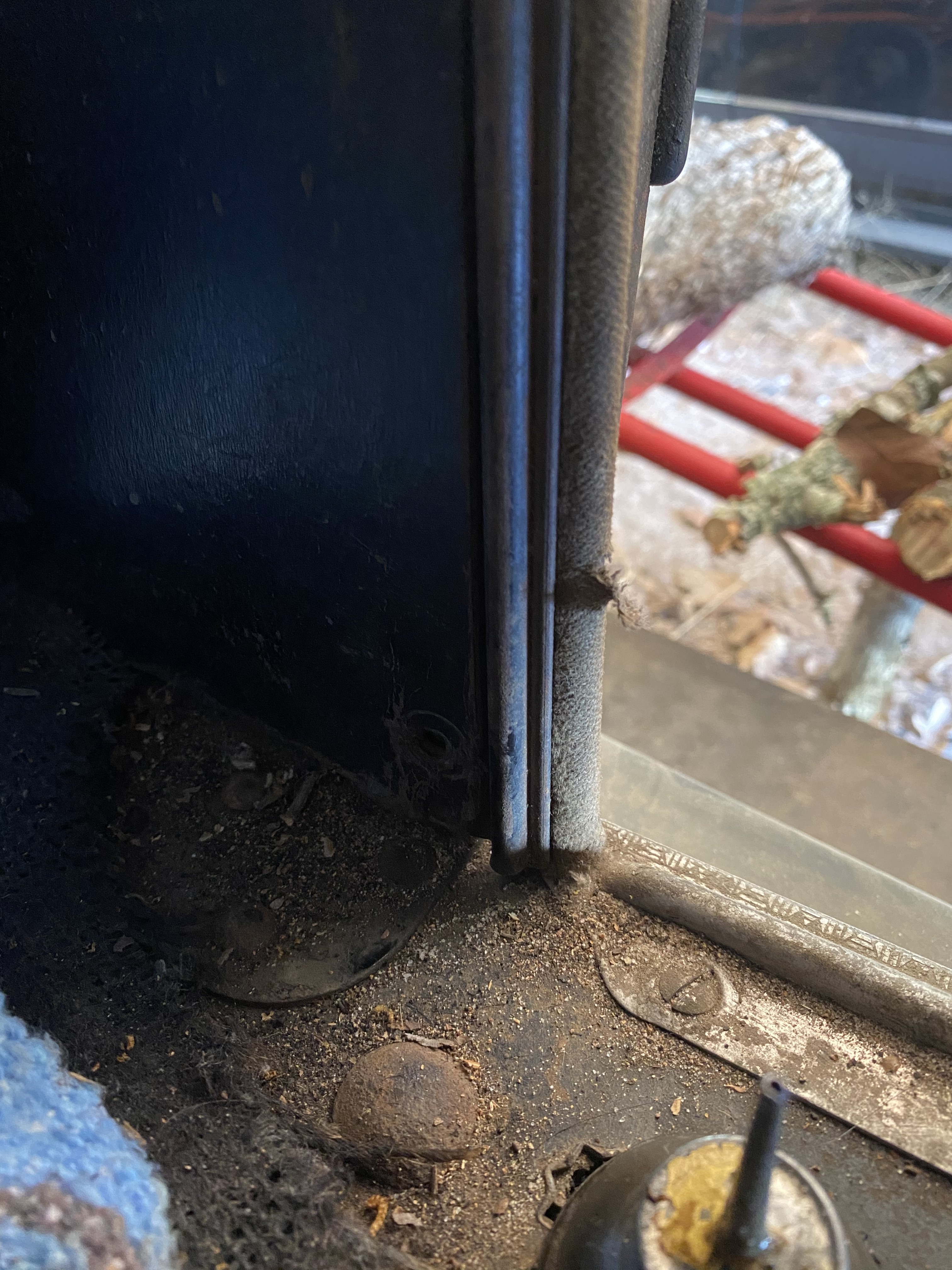
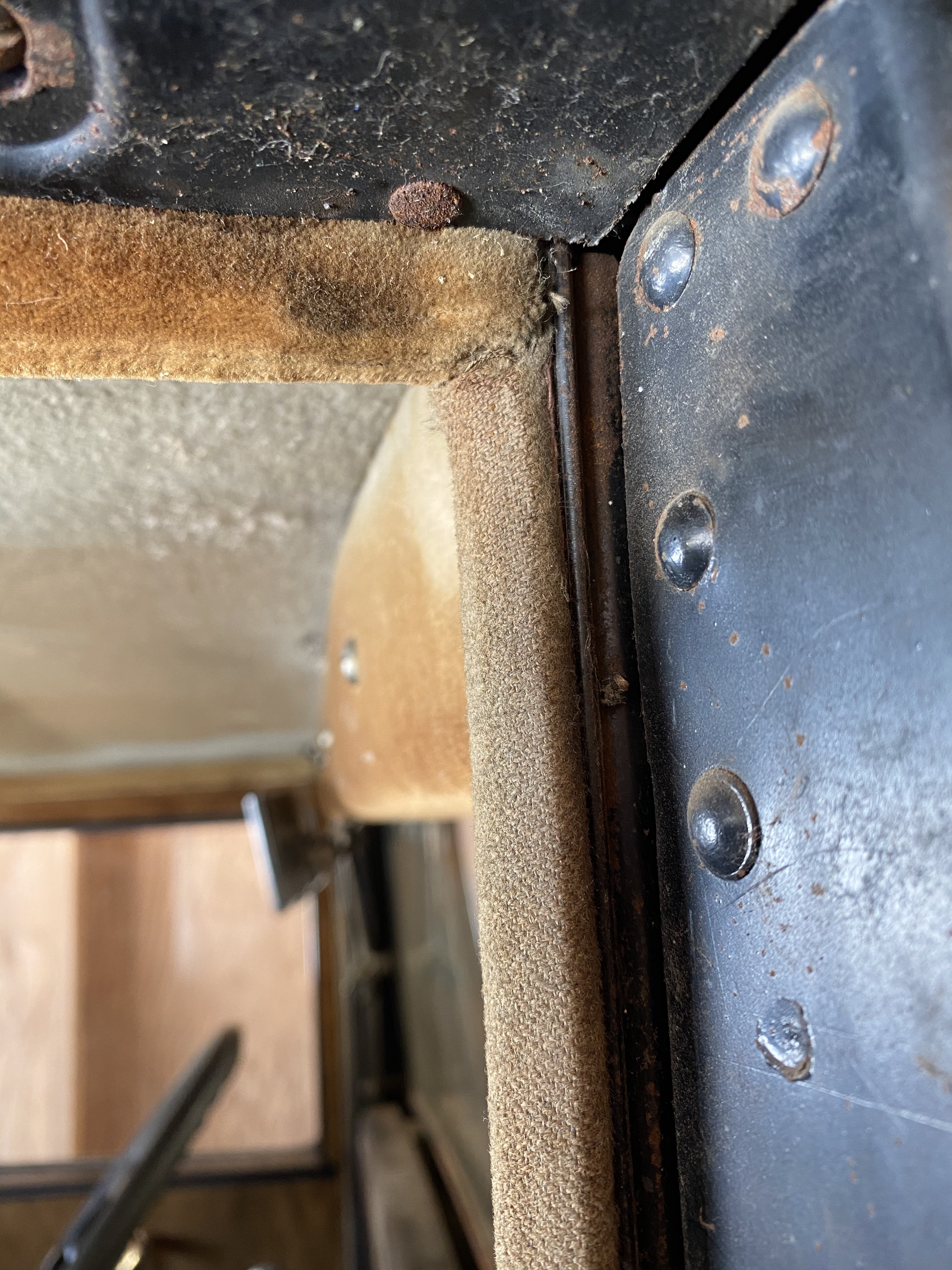 4)overall
4)overall
5)bottom
6) topI have heard that the doors are the same between Hudson and Essex but I don’t know about the cowl panel retainer.0 -
Front bumpers are different between Hudson and Essex, maybe the mounts are the same?
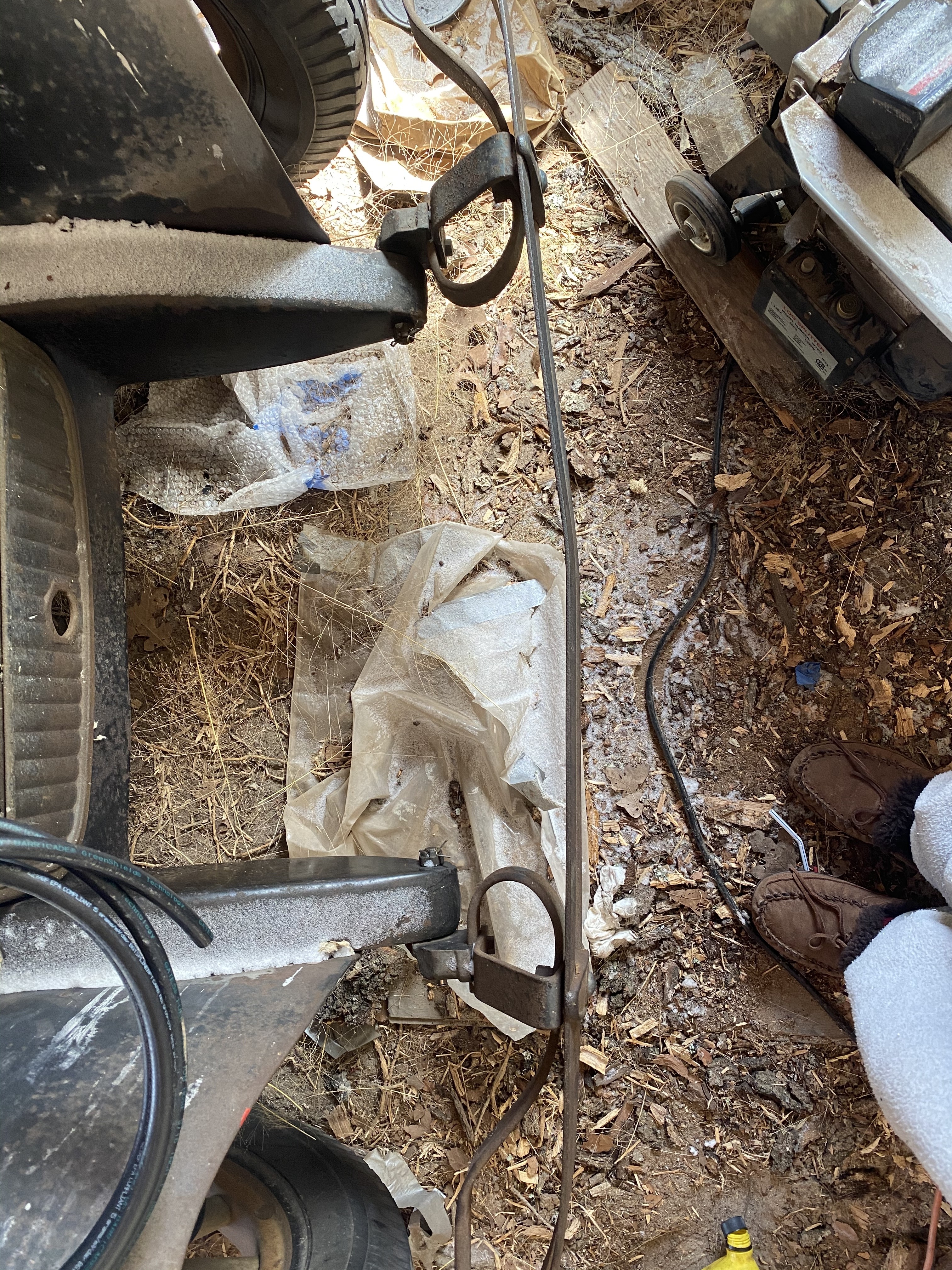 Side view
Side view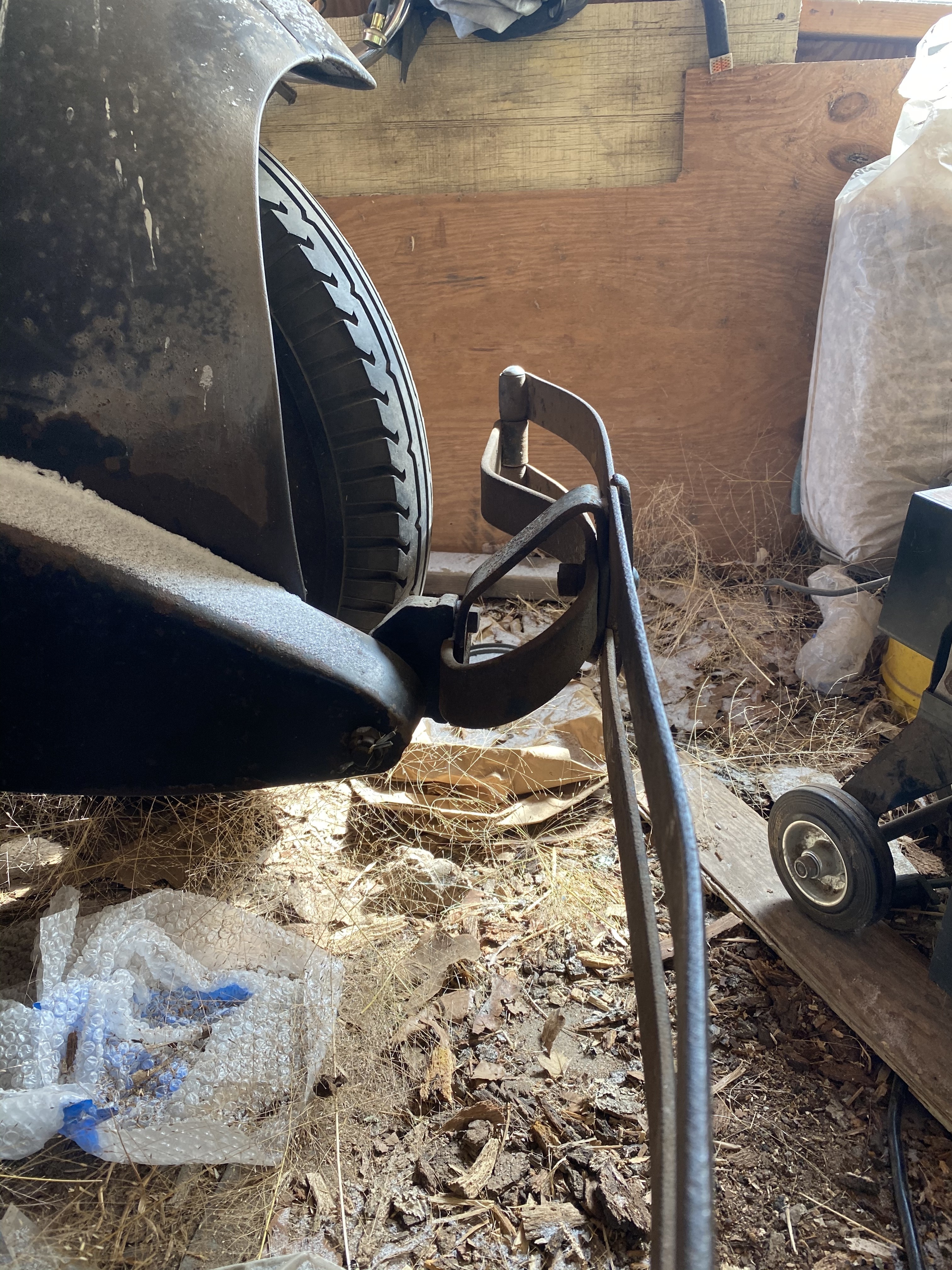
Spare carrier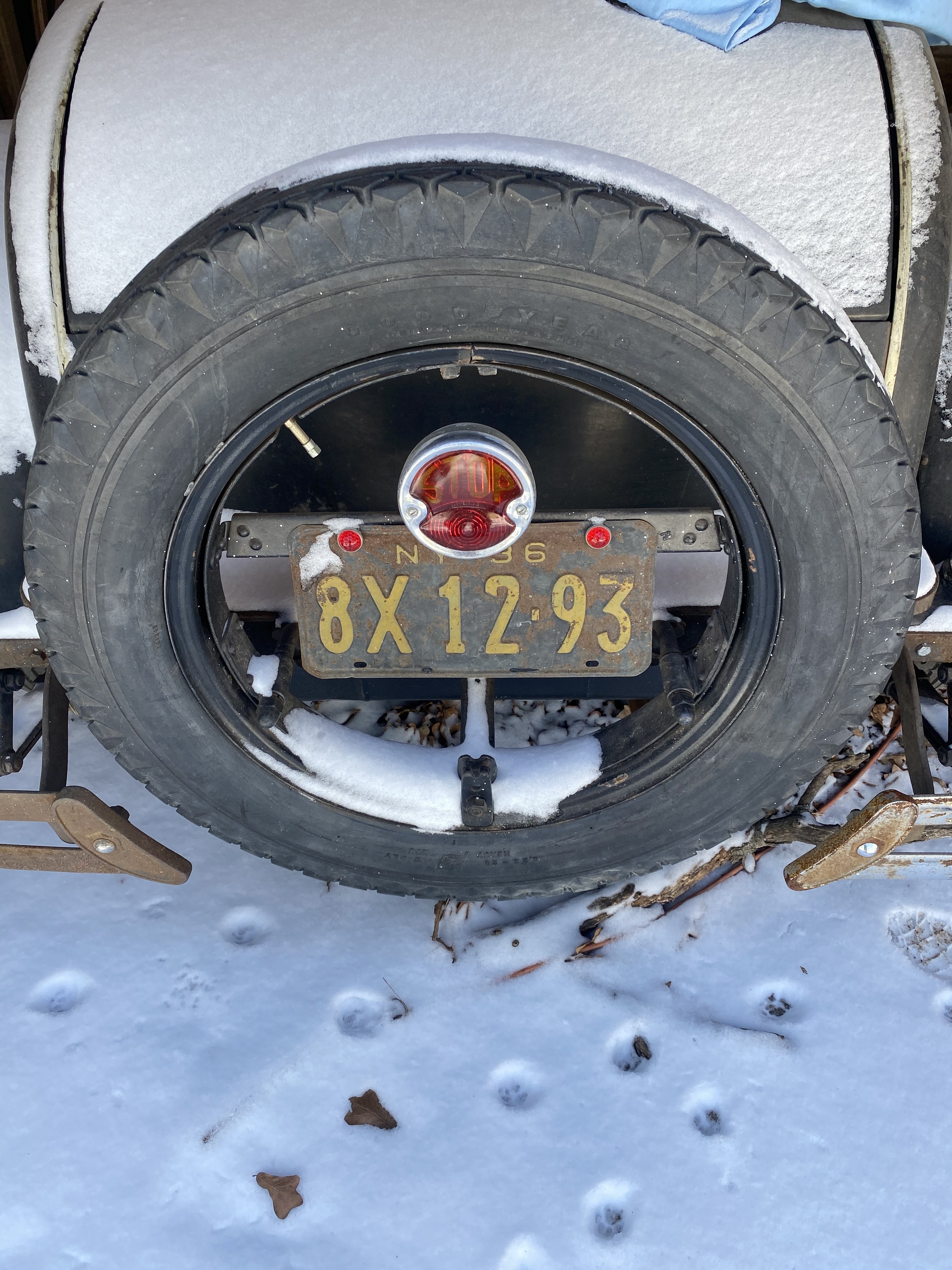 Three lower brackets
Three lower brackets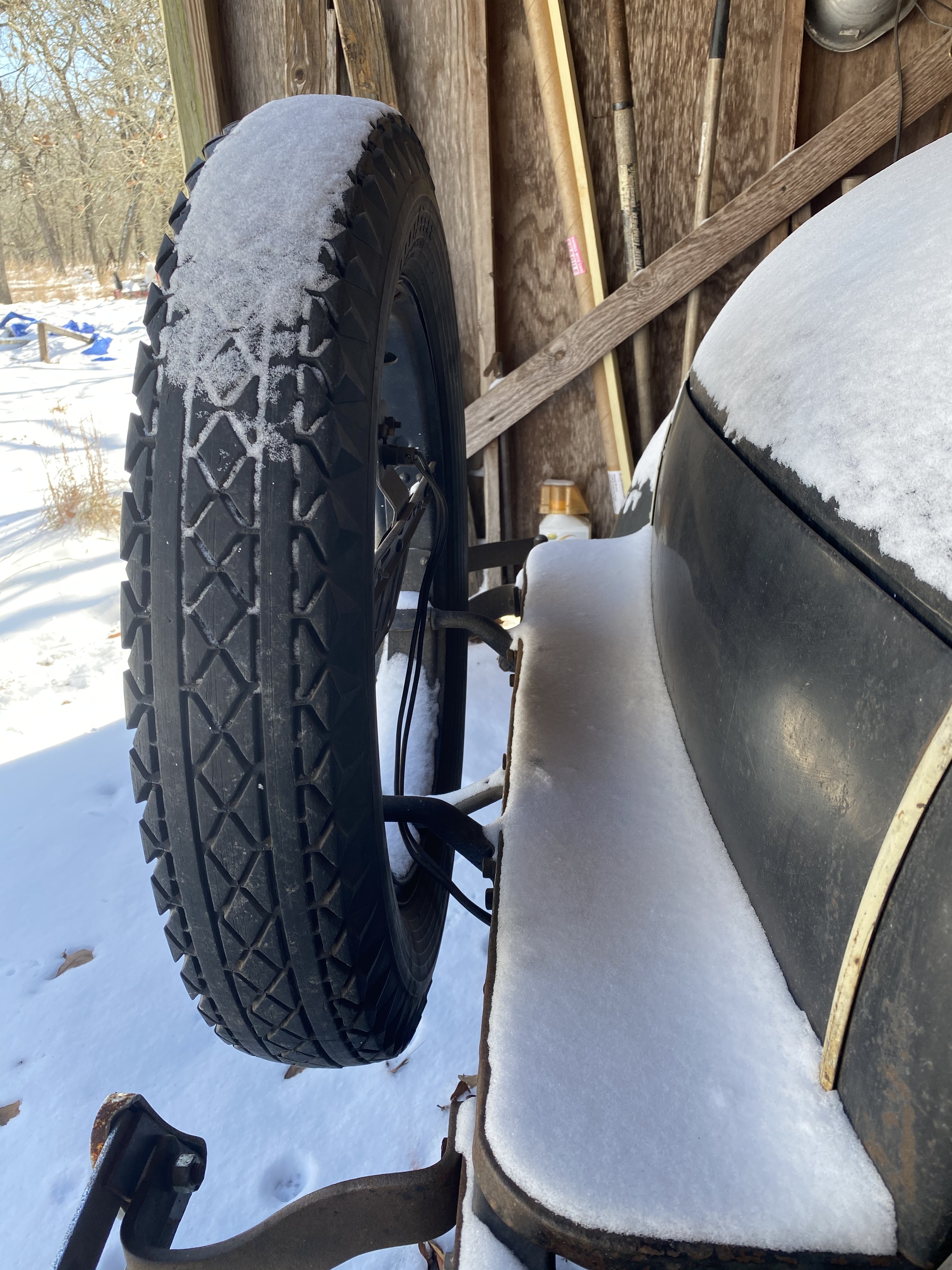
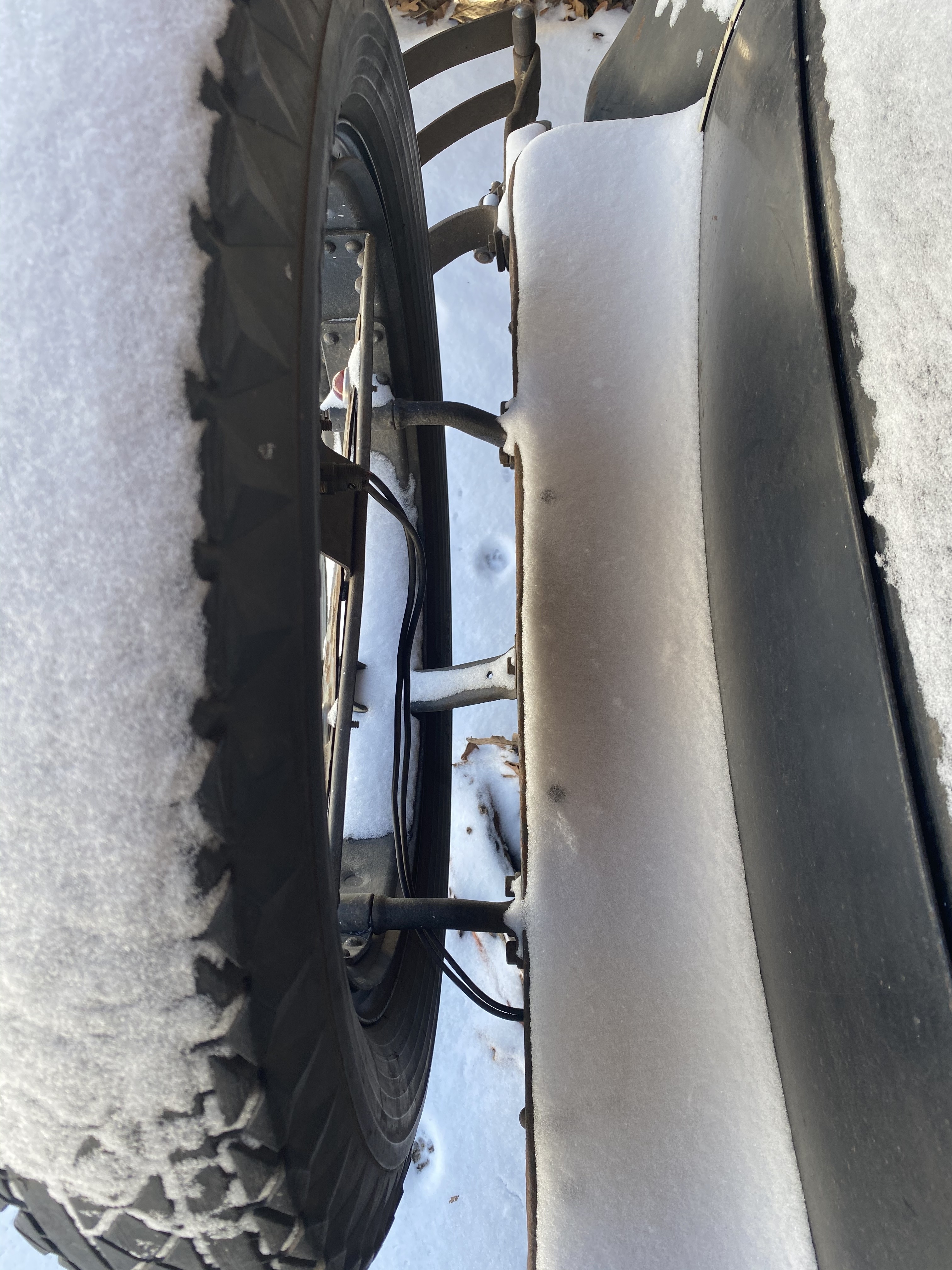 0
0 -
We survived the polar vortex almost embarrassingly well! My only mistake was not having enough firewood cut! Not matter, the propane tank is full. Despite living in the country I only needed to rely on kerosene lamps for a few hours before dawn one morning.I had an enlightening conversation with Hans yesterday. So with that motivation, after a long break from the 70 year maintenance schedule, I bit the bullet and removed the water manifold to find that the mischievous little mouse had made his nest in the first down tube above the #1 cylinder. Thankfully there was no nesting material below deck but a small amount made it into the water jacket inside the head itself but it hadn’t spread past #2 cylinder. I managed to pull it all out with hemostats, a bailing wire hook and a good blast from my cheapo pressure washer that survived my negligence when it froze. Then I fired up the bore scope camera and was able to locate a chunk of cast iron and remove it.As per Han’s suggestion, I am going to put a temporary strainer in the radiator hose in order to prevent any small fragments from becoming lodged in the radiator again.Before
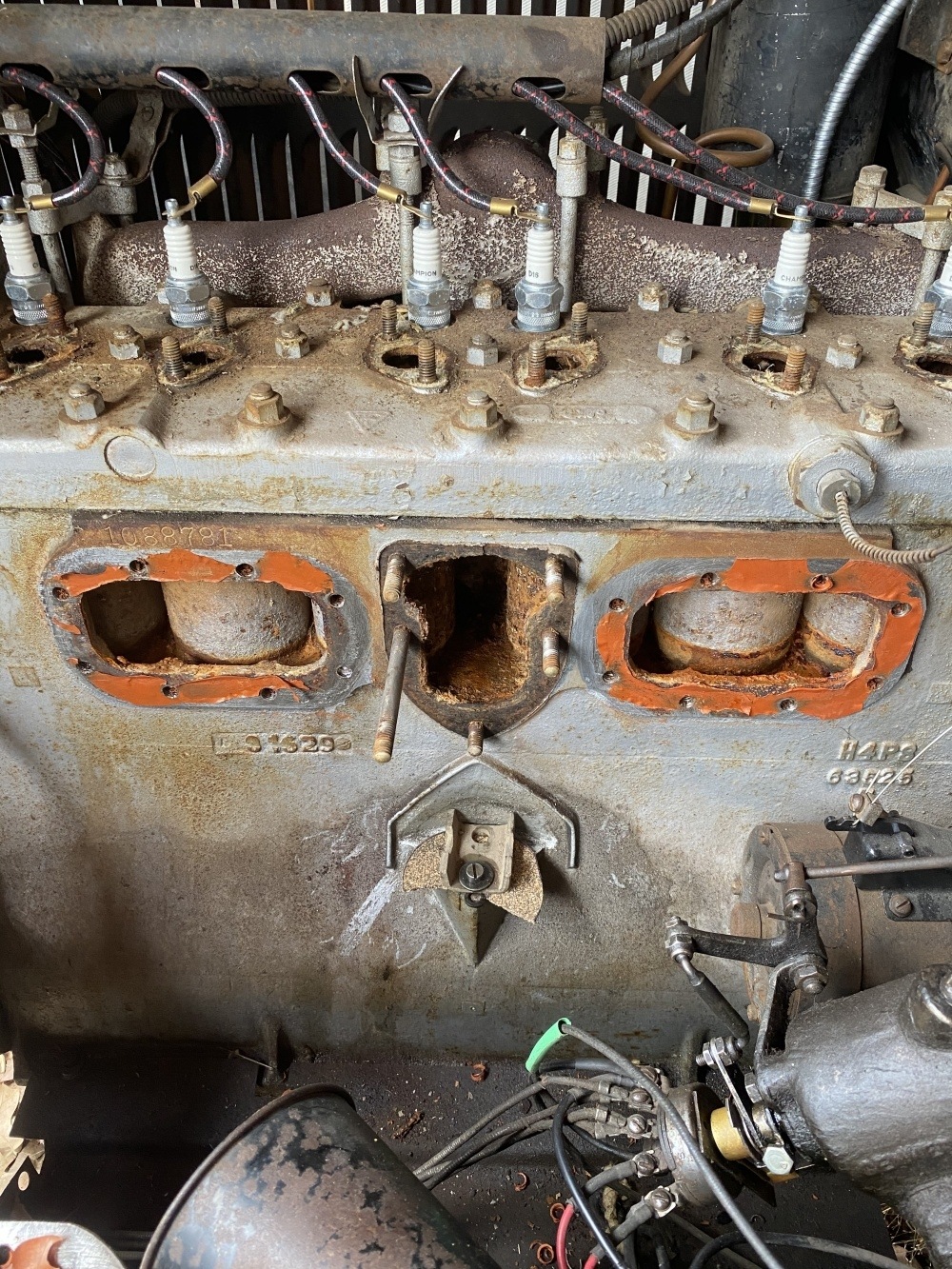 After
After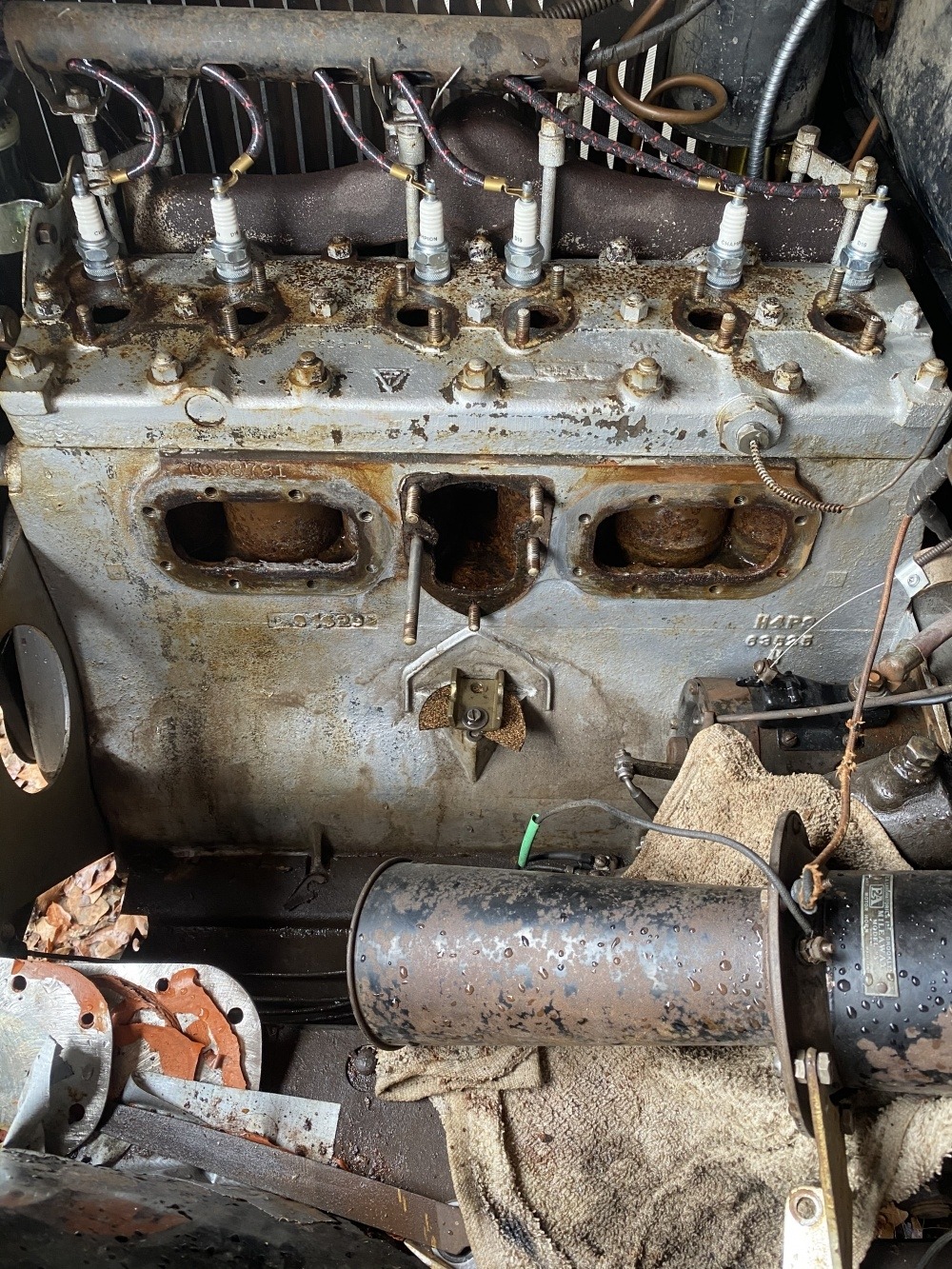 Note the water beaded up on the bare metal of the horn. I treated it with waxoyl six months ago and it’s still protecting the surface!
Note the water beaded up on the bare metal of the horn. I treated it with waxoyl six months ago and it’s still protecting the surface!
Time to get out the gasket material and make some gaskets!0 -
I started out using paper gasket material but after getting a little wet while peening it, it started to separate. Since I still may have to remove this manifold again I decided to go with 1/16” cork.
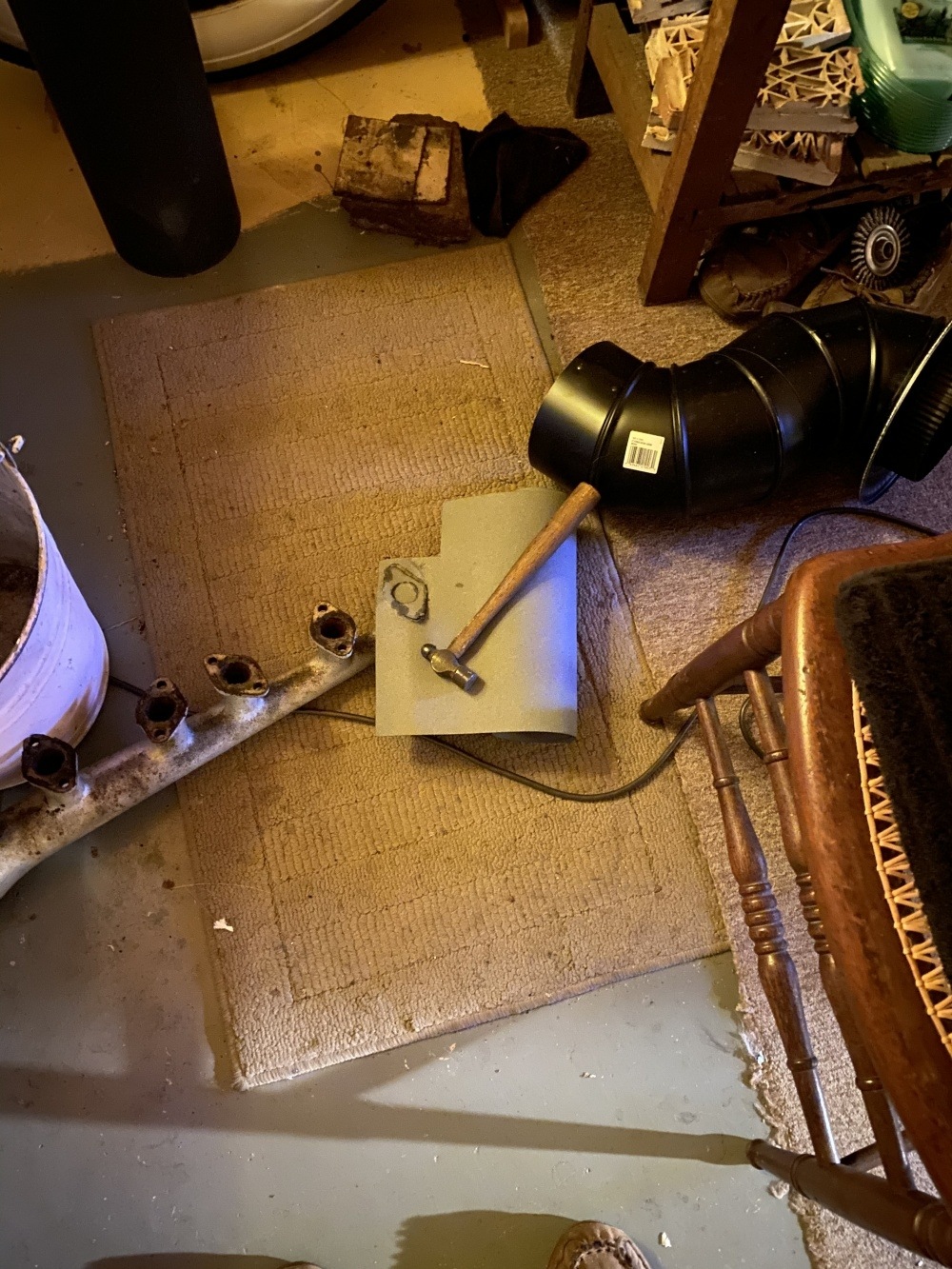 I love having the antique punches to make nice holes. (An Emily Morgan dollar is probably the best size for the center hole. Too bad all I had was a Kennedy half dollar and some quarters....)
I love having the antique punches to make nice holes. (An Emily Morgan dollar is probably the best size for the center hole. Too bad all I had was a Kennedy half dollar and some quarters....)
I used Dad’s tiny hammer to peen the gasket. It’s small enough that with light tapping there’s little chance of snapping an ear off. I wouldn’t DARE risk it on the Marvel carburetor, however!
He carried it in a green canvas bag with his basic tool kit. He took it all over the world servicing industrial centrifugal compressors. Whenever he showed up at at a 95 degree highrise office building, he was treated like royalty, especially when it was a quick, easy fix.Anyway back to the subject at hand...
Its a little easier to cut and punch out the holes prior to cutting the outer perimeter.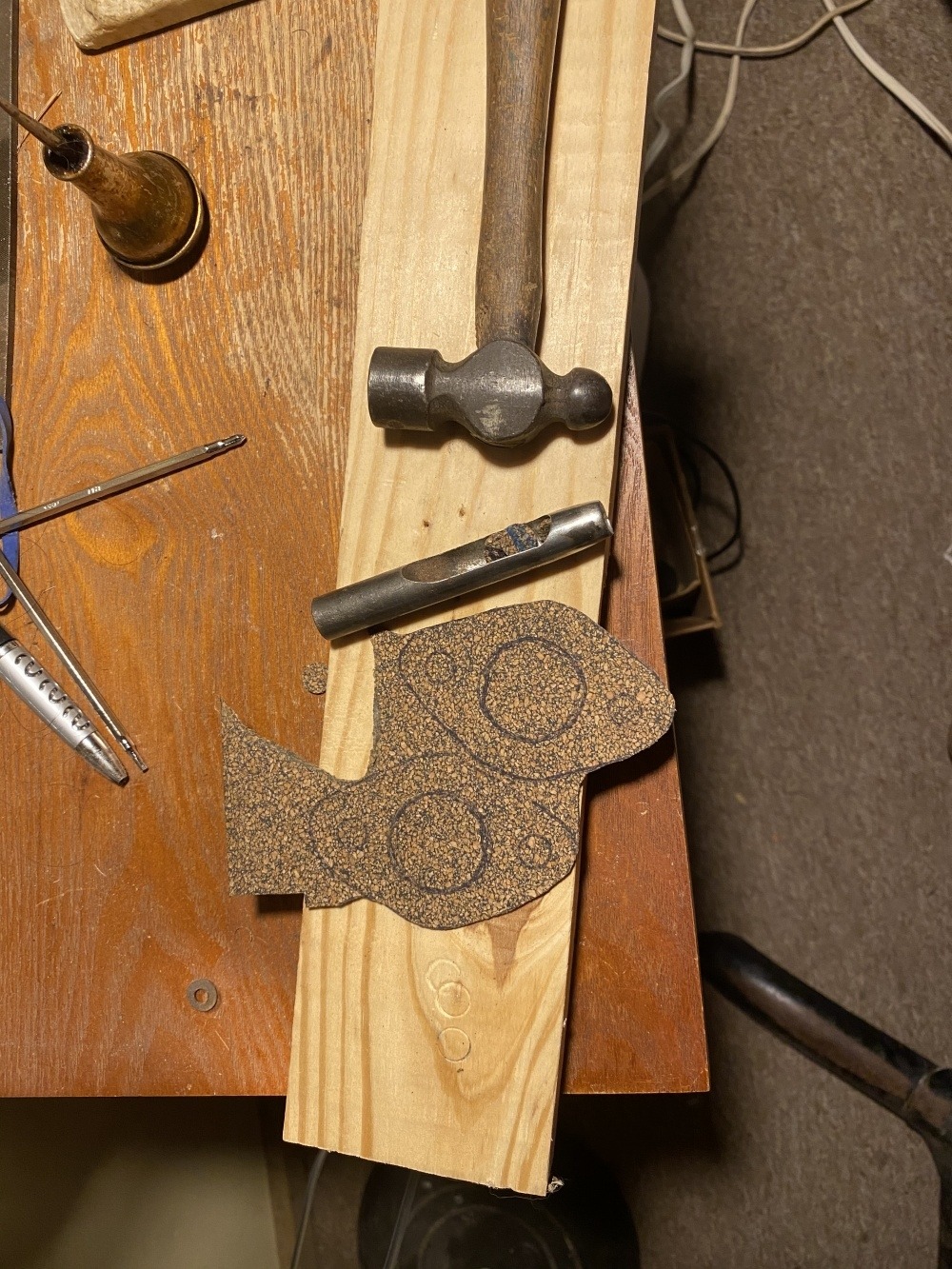
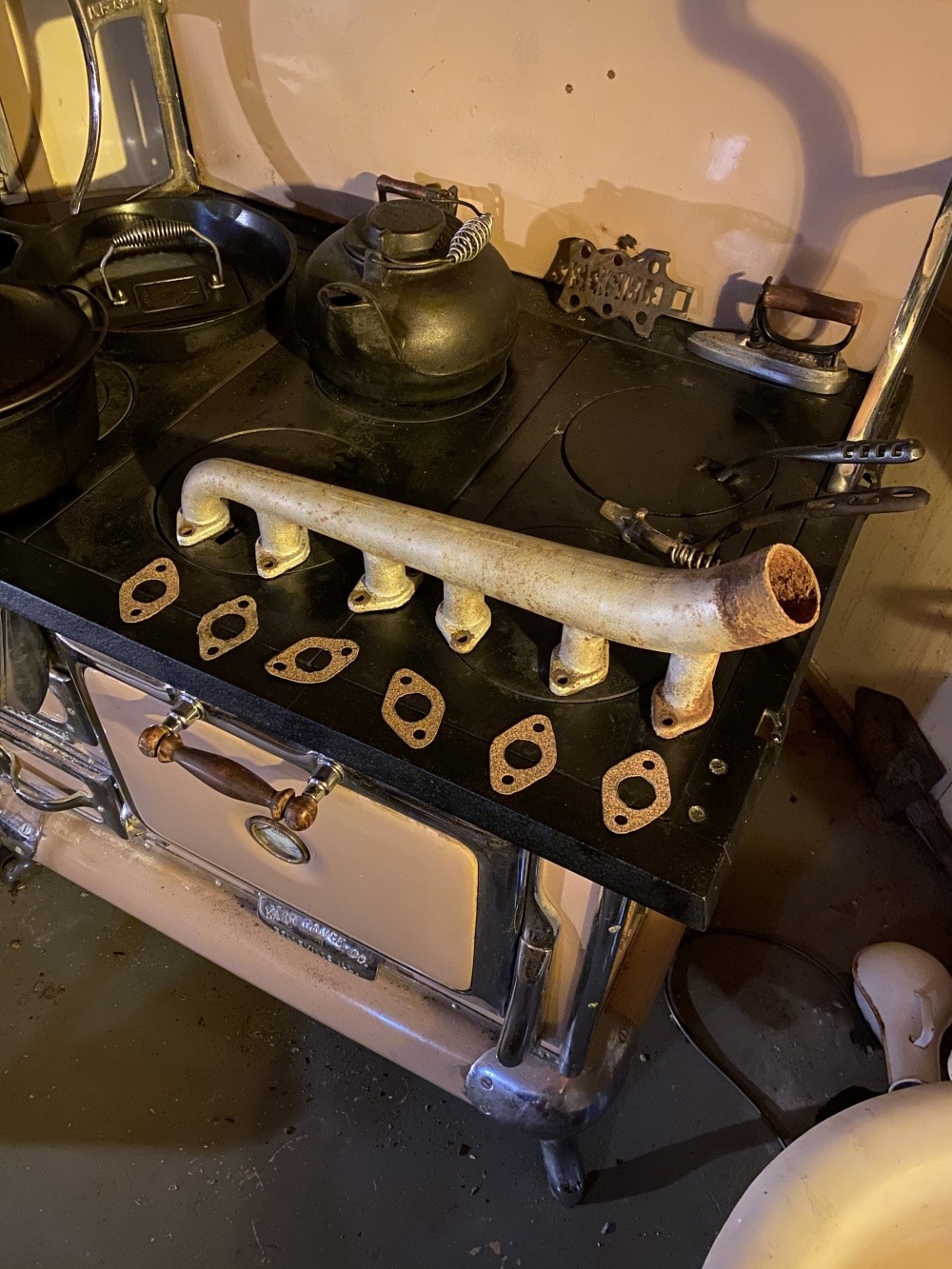 the Karr is going to be great for flash drying bare metal parts before rust can even get it’s shoes on!
the Karr is going to be great for flash drying bare metal parts before rust can even get it’s shoes on!
The manifold needs to be cleaned more thoroughly but I removed it from the vinegar bath to check the fit of the gaskets.0 -
Your stove is really something !!!!0
-
Reminds me of the story of the newbie skydiver, jumps out of the plane, and after free falling for a while can't find the ripcord. Hurtling downward at great speed, he sees someone hurtling upwards, so calls out "Hey, do you know anything about parachutes?", and the other guy replies "No, do you know anything about gas stoves?"0
-
Thanks Hans, here’s the waffle iron in action!Hans said:Your stove is really something !!!!So how ‘bout that cylinder block? In your experience doesn’t it look fairly clean already in the first photograph before pressure washing?
I used a loose sawzall blade to clean the gap between the cylinders.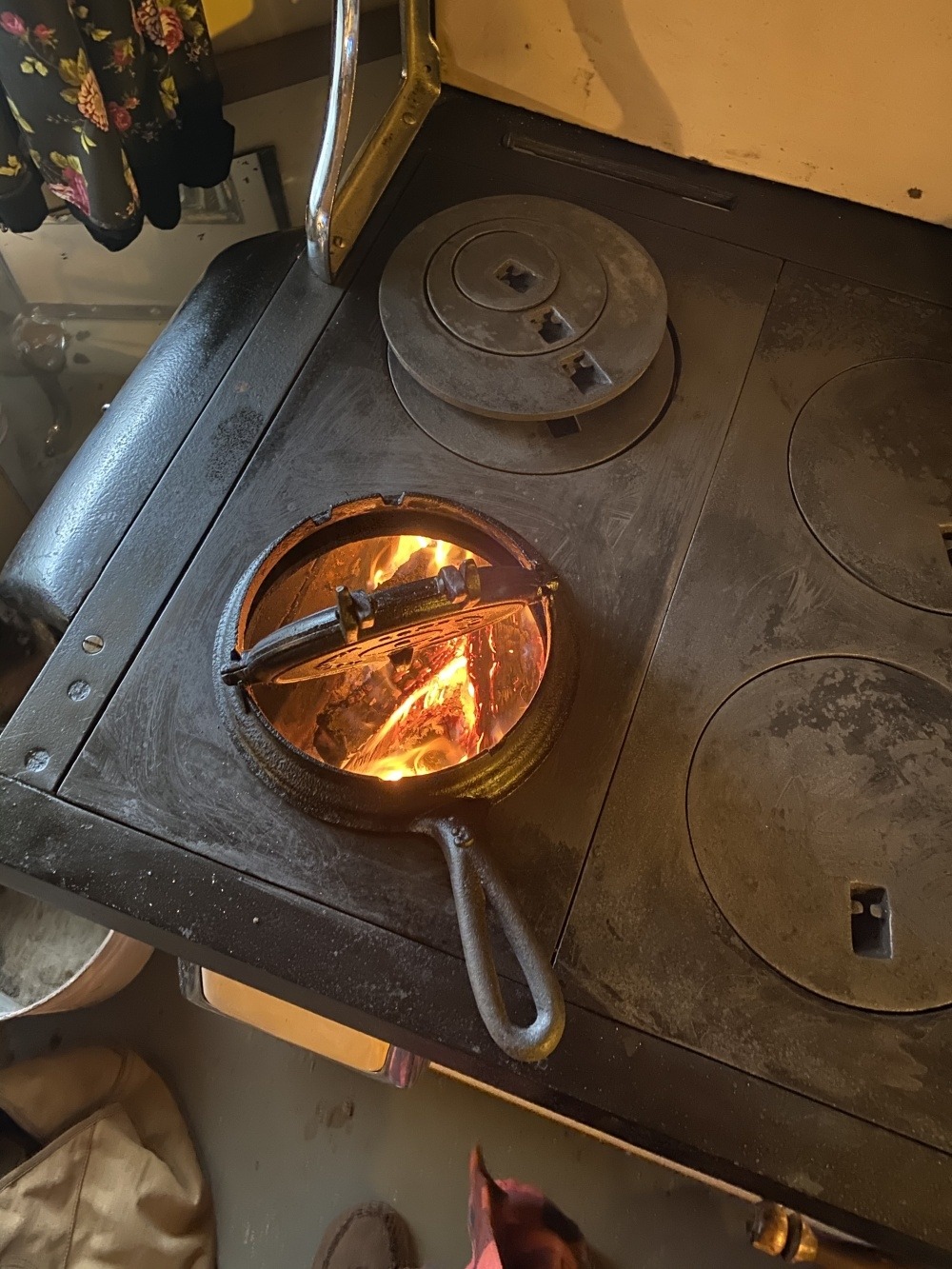 0
0 -
Natural gas is extremely safe, until it builds up!Geoff said:Reminds me of the story of the newbie skydiver, jumps out of the plane, and after free falling for a while can't find the ripcord. Hurtling downward at great speed, he sees someone hurtling upwards, so calls out "Hey, do you know anything about parachutes?", and the other guy replies "No, do you know anything about gas stoves?"
heheh!0 -
Your leather/hole punches will stay sharp longer and make a nicer hole if you punch into the end grain of the wood rather than the face.0
-
Thanks for the tip! And here I thought I was gdoing good using the harder surface of the knot!bent metal said:Your leather/hole punches will stay sharp longer and make a nicer hole if you punch into the end grain of the wood rather than the face.0 -
Why I dislike Kreem and other fuel tank sealers....
 I was beginning to question the dependability of the current fuel feed canister until I discovered this very effective plug formed by dislodged liner. I know that the canister is pulling a heck of a vacuum because it was FIRMLY lodged in the fuel line. Now I know why it was going empty more and more frequently.
I was beginning to question the dependability of the current fuel feed canister until I discovered this very effective plug formed by dislodged liner. I know that the canister is pulling a heck of a vacuum because it was FIRMLY lodged in the fuel line. Now I know why it was going empty more and more frequently. Here’s a view of the newly acquired rumble seat cushion. I am looking for a reputable vintage automobile upholsterer to replicate them in fresh leather. There are no exposed seams so I may do it myself but would prefer to have a professional do it.0
Here’s a view of the newly acquired rumble seat cushion. I am looking for a reputable vintage automobile upholsterer to replicate them in fresh leather. There are no exposed seams so I may do it myself but would prefer to have a professional do it.0 -
Can you not restore the existing leather with a reputable leather restoring cream? It looks good enough unless there are unseen tears. That's what we did with my rumble seat cushion.0
-
Thanks for the great suggestion, I’m all about “original original “and glad you were able to preserve yours!Unfortunately it’s more damaged than it looks from that angle. I was actually thinking about treating it and making clear vinyl covers to hold it together.For now I put the word out in the South Texas chapter for an upholsterer and will concentrate on mechanical issues for the time being.
As you probably know it takes acts of contortion to get into and out of it without placing your foot on it. That’s the only reason I am considering recovering it. Inevitably someone is going to step in it!It’s hard to find a good balance between functionality and conservation.I have reproduction saddles for my Victorian bicycles and save the originals for display. I’ve never tested the theory but apparently the weak link with them is the seams split fairly quickly when ridden. They have a rougher life however.0 -
So now that the Kreem plug is out of the fuel line she’s currently got a reliable supply of fuel I decided to once again turn my attention to the flooding issue.I broke a chunk off of the big screwdriver I was using to attempt to coax out the float valve seat! I decided that I would prefer to push my luck with the original VERY WORN needle (and probably seat).
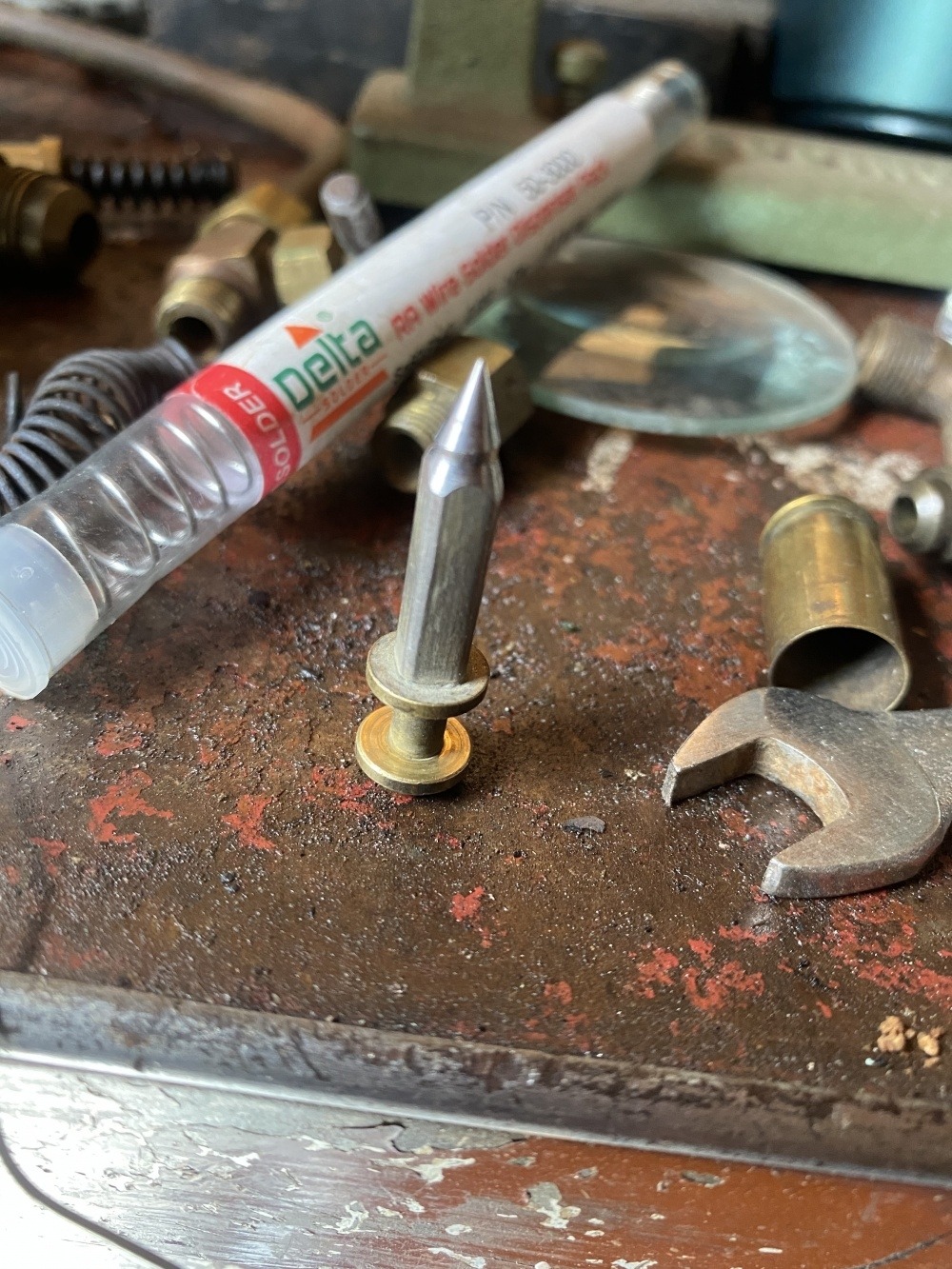
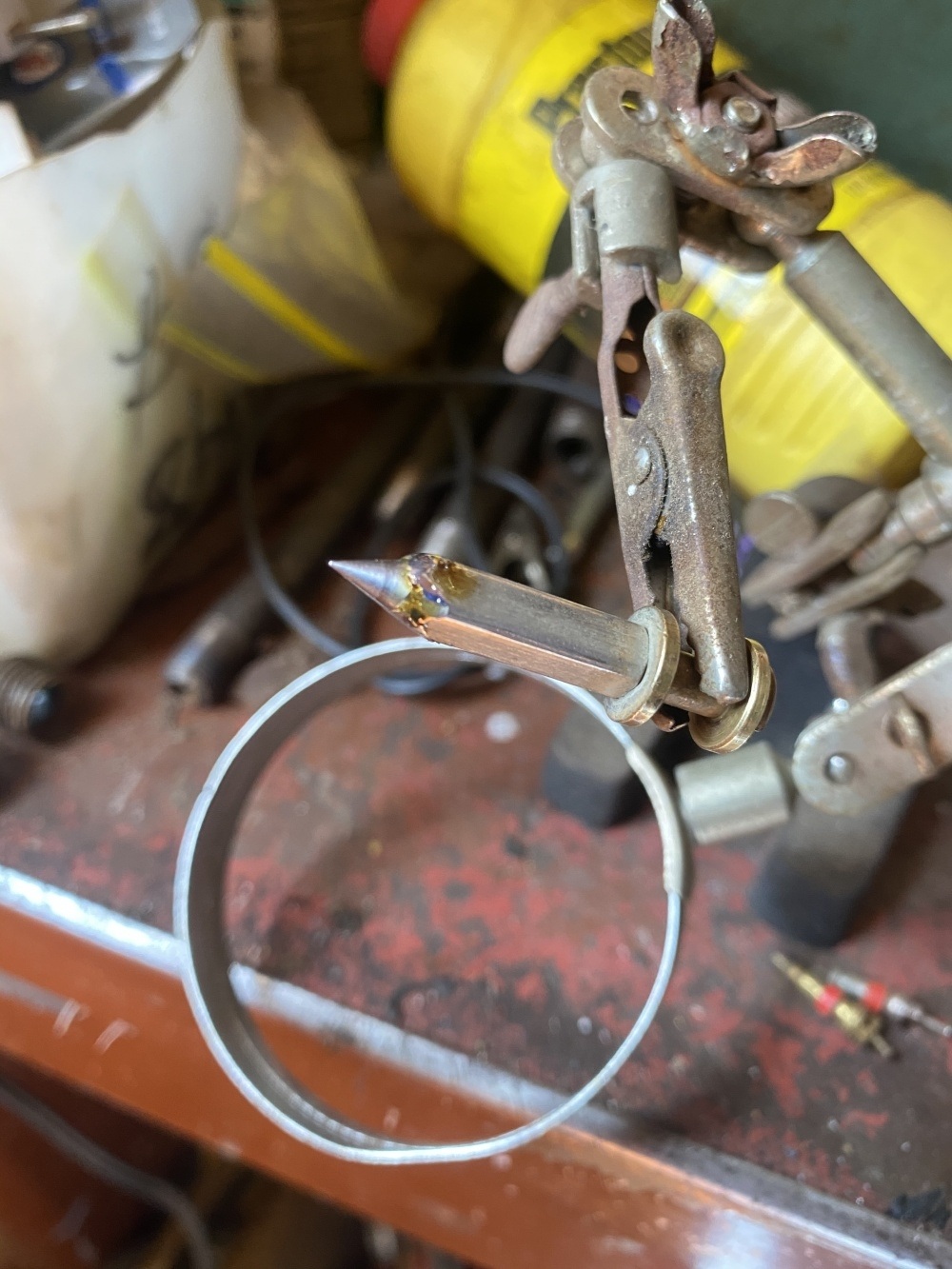 I put some electronic solder around the groove. Then filed it down somewhat with a mill file, then the rest of the way with a whetstone and had great results the full 360 degree rotation of the needle ( it used to leak in certain positions as it would rotate during idle) with the float cover removed. I let it run for some time and it worked perfectly until I replaced the cover.(The new replacement needle and seat with the real one in the foreground after the whetstone treatment.)
I put some electronic solder around the groove. Then filed it down somewhat with a mill file, then the rest of the way with a whetstone and had great results the full 360 degree rotation of the needle ( it used to leak in certain positions as it would rotate during idle) with the float cover removed. I let it run for some time and it worked perfectly until I replaced the cover.(The new replacement needle and seat with the real one in the foreground after the whetstone treatment.)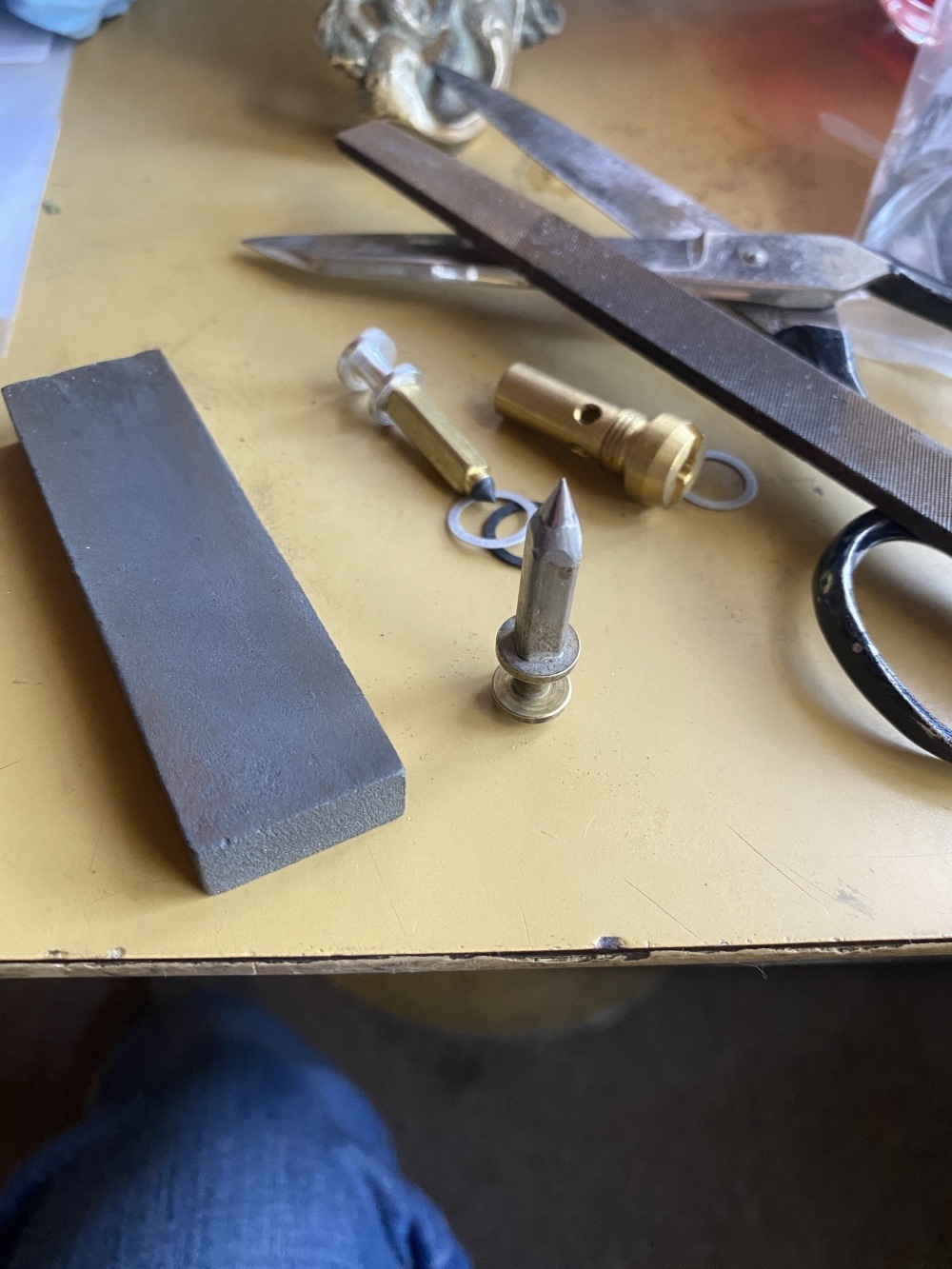 Then I noticed this.....
Then I noticed this.....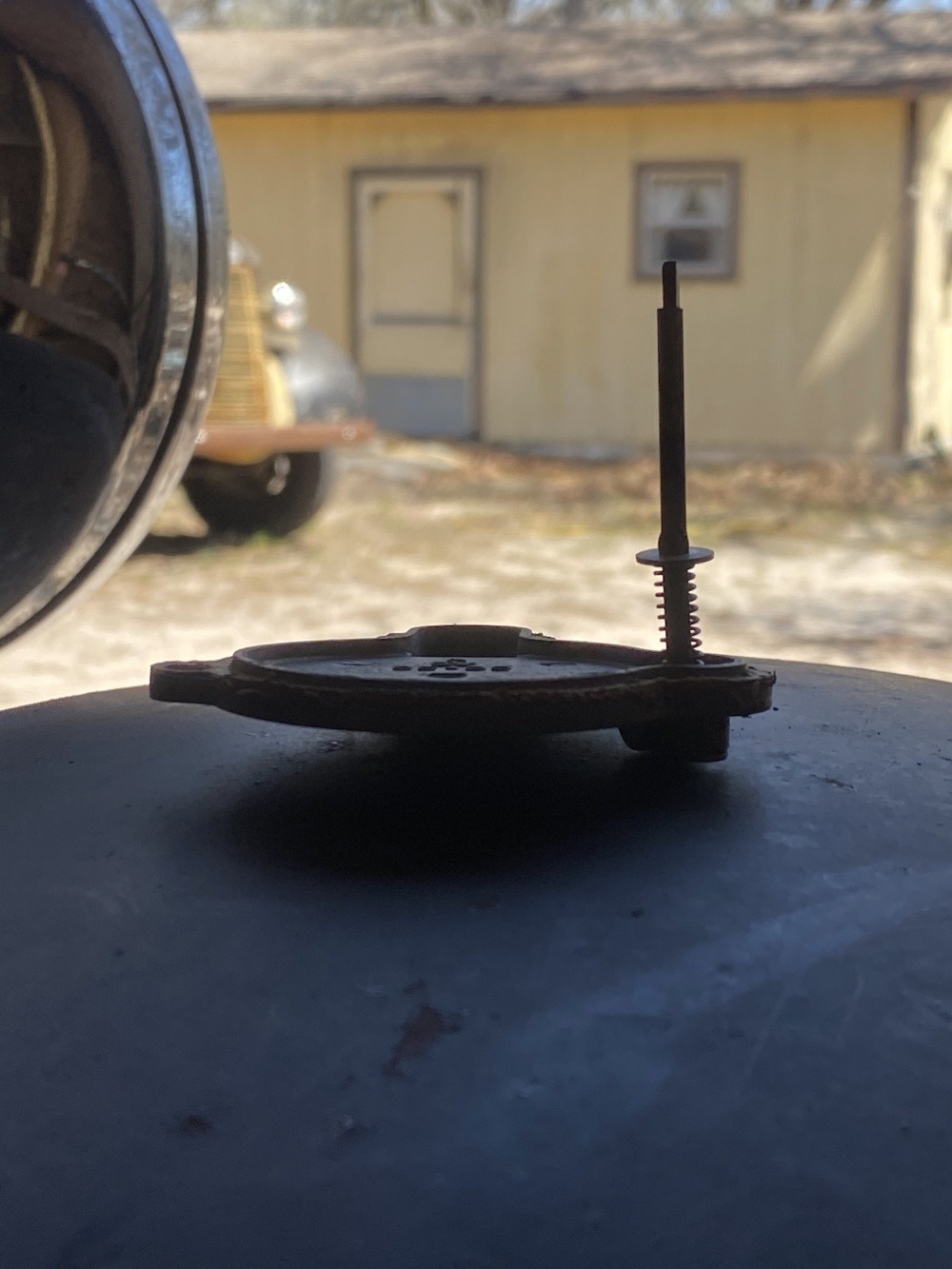 the shaft was slightly bent and so was the pointer.
the shaft was slightly bent and so was the pointer.
This was causing the float to catch on the lower brass washer, preventing the needle from properly seating.A few gentle well placed taps with the tiny ball peen hammer correct the issue and so far flooding is BANISHED!Thanks to photographic documentation from Mr. Lynch in Canada I discovered the location for the accelerator spring retainer and put it in it’s proper place for the first time in many years I’m sure!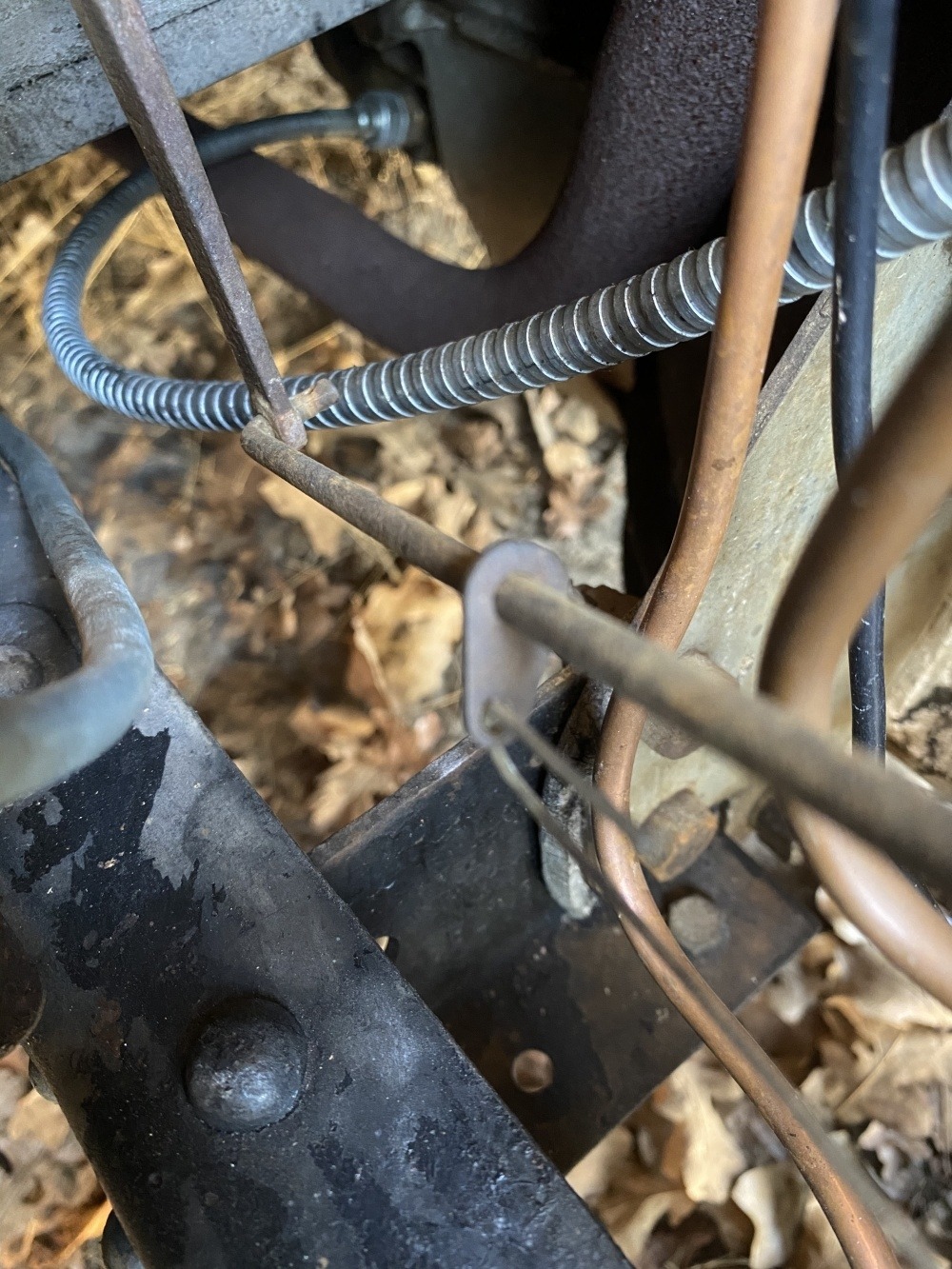 Then I drove it around the property and up to the cul de sac. I did not overheat so I think that the head gasket is not leaking and after I replace the radiator it should cool consistently! First I am going to check the strainers I put in the radiator hoses for more debris and add a mild solution of oxalic acid for a few days. Before changing the radiator.Also the split rivets for the hood welting arrived so those are back in place, preventing rattles!
Then I drove it around the property and up to the cul de sac. I did not overheat so I think that the head gasket is not leaking and after I replace the radiator it should cool consistently! First I am going to check the strainers I put in the radiator hoses for more debris and add a mild solution of oxalic acid for a few days. Before changing the radiator.Also the split rivets for the hood welting arrived so those are back in place, preventing rattles!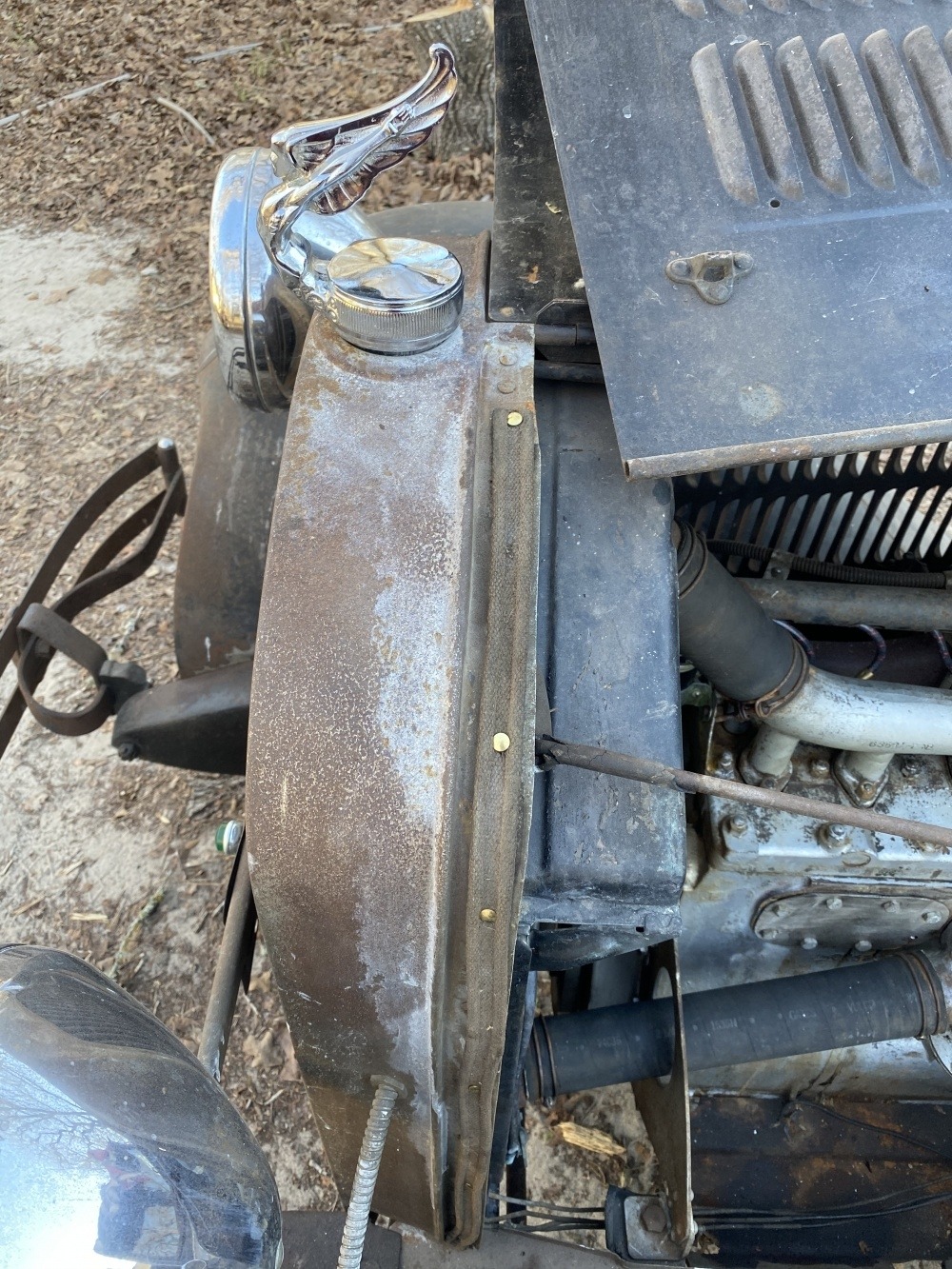 Baby steps!0
Baby steps!0 -
Great progress0
-
Is someone making repro floor mats for the 29's? If so, I'd like to add to my Hudson Repro Parts webpage.0
-
Not Essex.0
Categories
- 36.9K All Categories
- 113 Hudson 1916 - 1929
- 20 Upcoming Events
- 92 Essex Super 6
- 28.6K HUDSON
- 574 "How To" - Skills, mechanical and other wise
- 995 Street Rods
- 151 American Motors
- 178 The Flathead Forum
- 49 Manuals, etc,.
- 78 Hudson 8
- 44 FORUM - Instructions and Tips on using the forum
- 2.8K CLASSIFIEDS
- 608 Vehicles
- 2.2K Parts & Pieces
- 77 Literature & Memorabilia
- Hudson 1916 - 1929 Yahoo Groups Archived Photos
